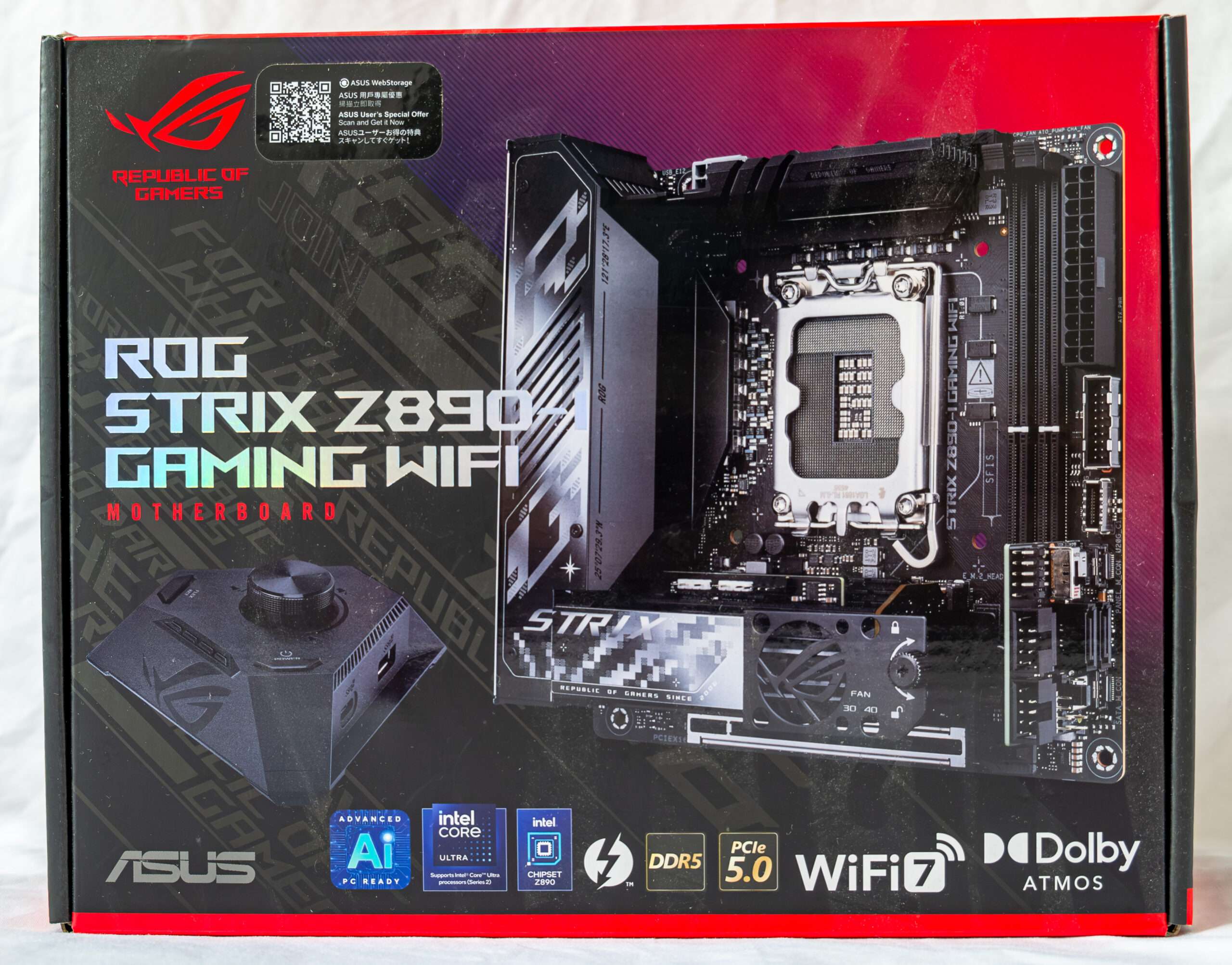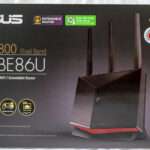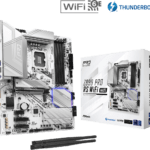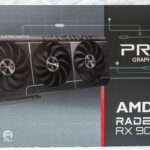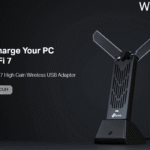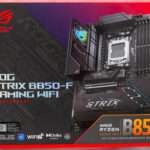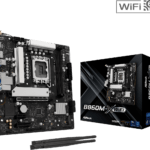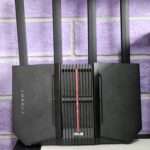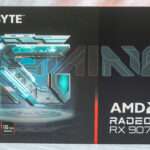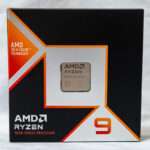The ASUS ROG Strix Z890-I Gaming WiFi motherboard is part of the premium ROG sub-brand, positioning it as a high-end offering. However, it falls short of flagship status, as the top-tier ROG motherboards bear the “ROG Maximus” label rather than “ROG Strix.” It comes packaged in the signature black-and-red box design typical of the ROG series, with the components neatly arranged in separate compartments beneath the motherboard.
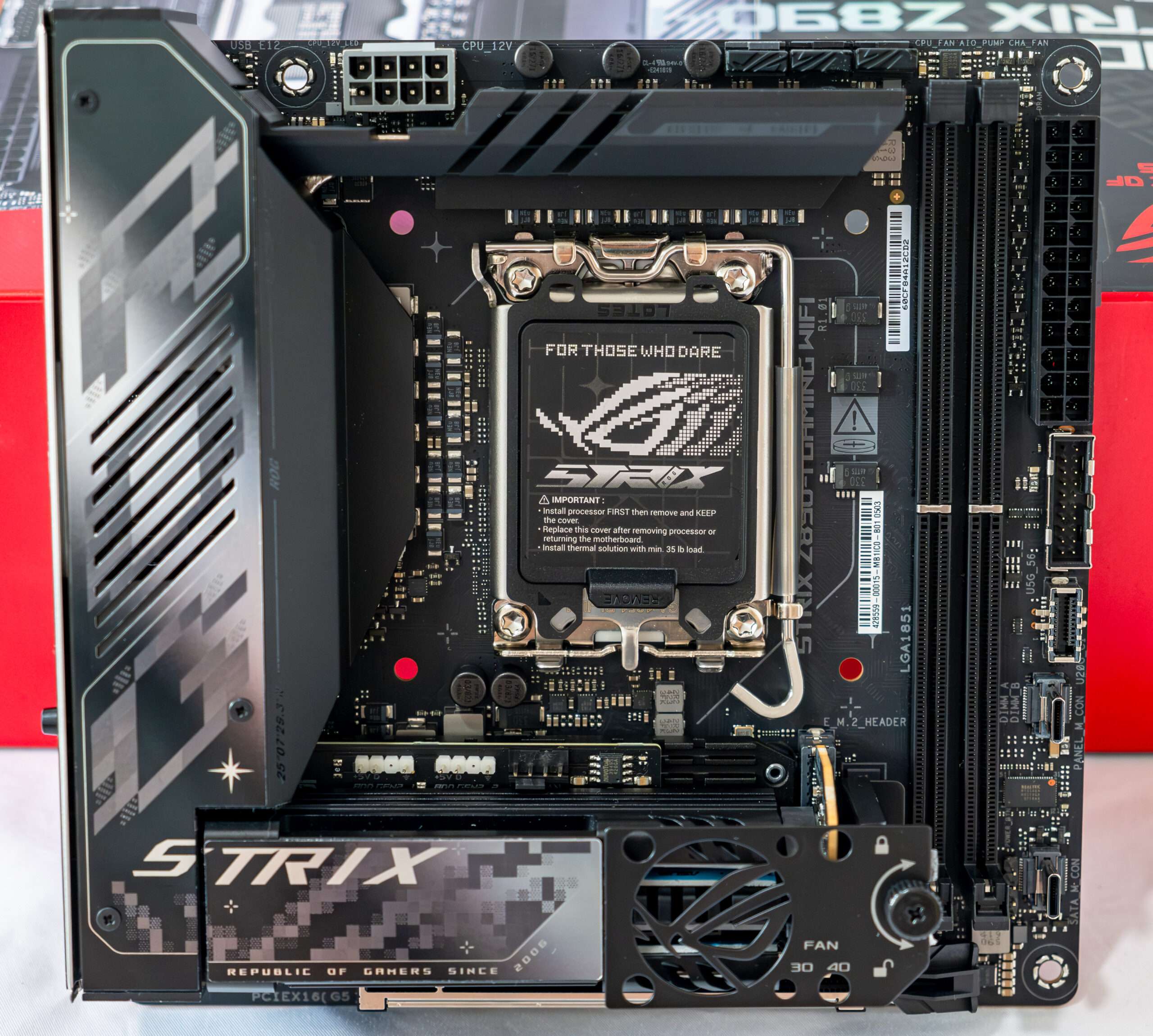
The Mini-ITX form factor measures 170 x 170 mm, while Micro-ATX can go up to 244 x 244 mm, ATX up to 305 x 244 mm, and E-ATX up to 305 x 330 mm. With dimensions of 170 x 170 mm, the ASUS ROG Strix Z890-I Gaming WiFi motherboard is built in the Mini-ITX form factor and features four mounting holes for installation in a case.
On the back features several controllers along with some standard circuitry. The PCB is meticulously crafted, with all soldering points smoothed and polished to eliminate sharp edges. A protective backplate is located in the VRM area, contributing to the cooling of this section of the printed circuit board.
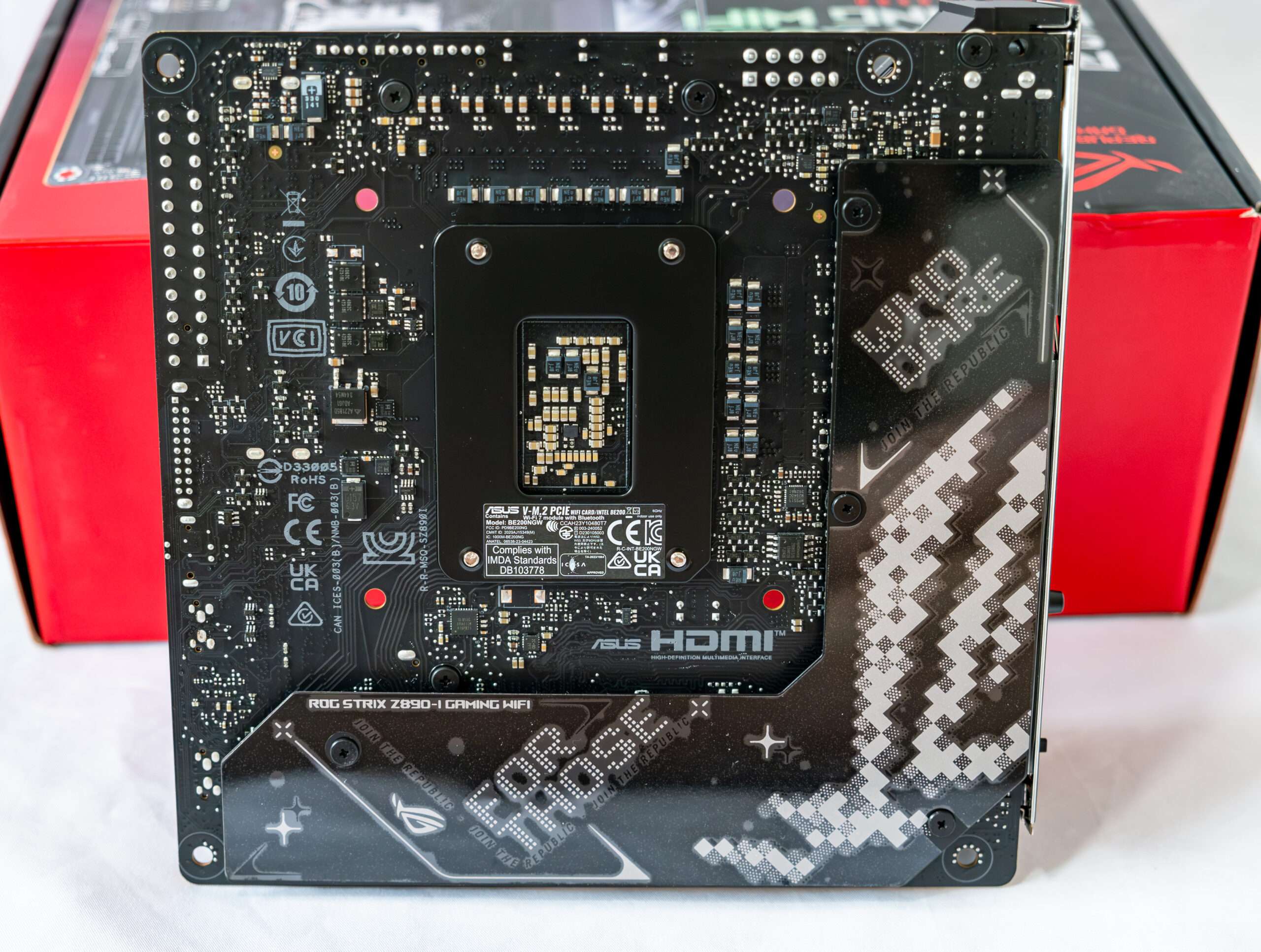
Let’s look again at the comparison table of the last 4 generations of Z series system chipsets.
| Peculiarities | Z890 | Z790 | Z690 | Z590 |
|---|---|---|---|---|
| Compatibility with Intel processors | Core Ultra 2xx | Core 14/13/12 | Core 14/13/12 | Core 11/10 |
| PCIe Version (CPU) | 4.0 & 5.0 | 4.0 & 5.0 | 4.0 & 5.0 | 3.0 (10th Gen) or 4.0 (11th Gen) |
| Number of PCIe lanes (processor) | 20 versions 5.0 & 4 versions 4.0 = 24 | 16 versions 5.0 & 4 versions 4.0 = 20 | 16 versions 5.0 & 4 versions 4.0 = 20 | 16 (10th Gen) or 20 (11th Gen) |
| PCIe version (chipset) | 4.0 | 3.0 & 4.0 | 3.0 & 4.0 | 3.0 |
| Number of PCIe/SATA lanes (chipset) | 24 4.0 & 8 SATA = 32 | 20 v4.0 & 8 v3.0 or 8 SATA = 28 | 12 v4.0 & 16 v3.0 or 8 SATA = 28 | 18 version 3.0 or 6 SATA = 18 |
| Number of SATA 6.0 Gb/s ports up to | 8 | 8 | 8 | 6 |
| DMI version | 4.0 | 4.0 | 4.0 | 3.0 |
| Number of DMI lines | x8 | x8 | x8 | x8 |
| RAM generation | DDR5 | DDR4 & DDR5 | DDR4 & DDR5 | DDR4 |
| Number of RAM channels | 2 | 2 | 2 | 2 |
| Maximum number of RAM slots | 4 | 4 | 4 | 4 |
| Maximum RAM | 256 GB | 256GB DDR5/128GB DDR4 | 256GB DDR5/128GB DDR4 | 128 GB |
| USB4 ports (40Gbps)(processor) up to | 2 | – | – | – |
| USB 3.2 Gen 2×2 ports (20Gbps) up to | 5 | 5 | 4 | 3 |
| USB 3.2 Gen 2×1 ports (10Gbps) up to | 10 | 10 | 10 | 10 |
| USB 3.2 Gen 1×1 ports (5Gbps) up to | 10 | 10 | 10 | 10 |
| USB 2.0 ports up to | 14 | 14 | 14 | 14 |
| Built-in Wi-Fi support | Wi-Fi 7 | Wi-Fi 7/ WIFI 6E | Wi-Fi 6E | Wi-Fi 6 |
Note that the Z790 has SATA ports included in the total number of PCIe lanes (28 in total), while the Z890 has 24 PCIe 4.0 lanes plus a maximum of 8 SATA lines, meaning that the Z890 chipset essentially has 32 PCIe lines, but 8 lines for SATA ports cannot be reconfigured for other use (while the Z790 simply had 8 PCIe 3.0 lanes, and they could be used for up to 8 SATA ports).
The Core Ultra processors have a total of 24 PCIe lanes (20 of which are version 5.0, and 4 are version 4.0), and there is also a built-in Thunderbolt 4 controller, which essentially gives us 2 USB4 ports (up to 40 Gb/s each).
In total, the new LGA1851 platform (processor + Z890) gives us an increase of 8 PCIe lanes (relative to the LGA1700 platform).
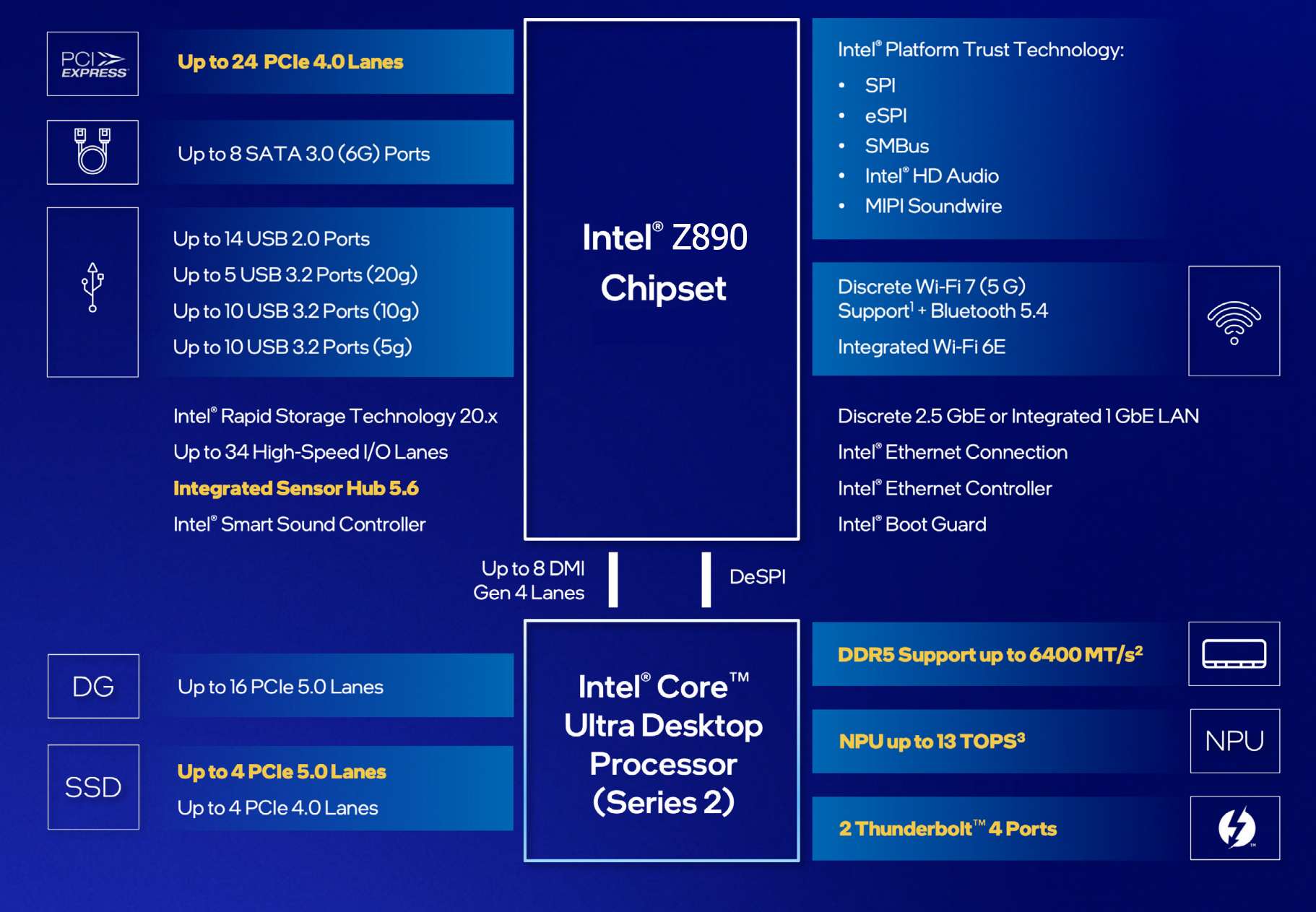
With the transition to a tiled layout, Arrow Lake brings improvements to nearly every component of the processor, including the compute cores, graphics core, input-output interfaces, and the addition of an NPU neural processor. Leveraging one of the most advanced manufacturing technologies—TSMC’s 3nm process—it’s no surprise that expectations were high for improved energy efficiency and reduced heat generation compared to the Raptor Lake series. Notably, Raptor Lake, though significantly refined, still relied on Intel’s older 10nm process. As a result, Arrow Lake was anticipated to deliver a substantial boost in both performance and energy efficiency.

The Compute tile is the centerpiece, housing eight high-performance Lion Cove P-cores and 16 power-efficient Skymont E-cores, with improvements to these cores discussed below. All cores are interconnected via a ring bus and share a 36MB L3 cache for data exchange. Each of the eight P-cores is equipped with a dedicated 3MB L2 cache, while the E-cores are organized into clusters of four, with each cluster sharing a 4MB L2 cache.

The memory controller in Arrow Lake has also been updated, dropping support for the DDR4 standard. Unlike Alder Lake and Raptor Lake, which featured controllers for both DDR4 and DDR5, the new architecture exclusively supports DDR5. This shift eliminates the outdated DDR4 standard and, in theory, allows for slightly more efficient operation of DDR5 subchannels.

The graphics core components in Arrow Lake are distributed across the Graphics and SoC tiles. The Graphics tile serves as the primary component, housing the elements of the graphics pipeline and the computing units located within the Xe cores. Meanwhile, the SoC tile contains the display and media processing engines, as well as the display output interface.
The graphics core in Arrow Lake-S is based on the Xe-LPG graphics architecture, which was first introduced in Meteor Lake mobile processors. This architecture is a significant upgrade over the Xe-LP found in Raptor Lake desktop processors. The Graphics tile features the Xe-LPG core, built on TSMC’s advanced 5nm N5P process. It includes a Xe Render Slice with four Xe cores, comprising 64 EU streaming units, which correspond to 512 unified shader units in competing solutions.
Unlike other architectures in the Xe family, the integrated graphics controller in Arrow Lake lacks XMX blocks for AI tasks. Instead, AI acceleration is handled using DP4a instructions on the main computing units. Despite this limitation, the same XeSS technology will still function, albeit at a somewhat reduced performance level.
The media engine in Arrow Lake-S offers hardware acceleration for video decoding at resolutions of up to 8K at 60 FPS in 10-bit HDR format, with support for VP9, AVC, HEVC, AV1, and SSC video formats. It also supports hardware-accelerated video encoding at resolutions up to 8K at 120 FPS in 10-bit HDR, compatible with VP9, AVC, HEVC, and AV1 formats.
The display output engine can drive up to four displays simultaneously, supporting HDMI 2.1, DisplayPort 2.1, and eDP 1.4 connections. It delivers output signal capabilities of 8K HDR at 60 Hz or 2560×1440p at up to 360 Hz for a single display, and 4K HDR at 60 Hz across four displays.
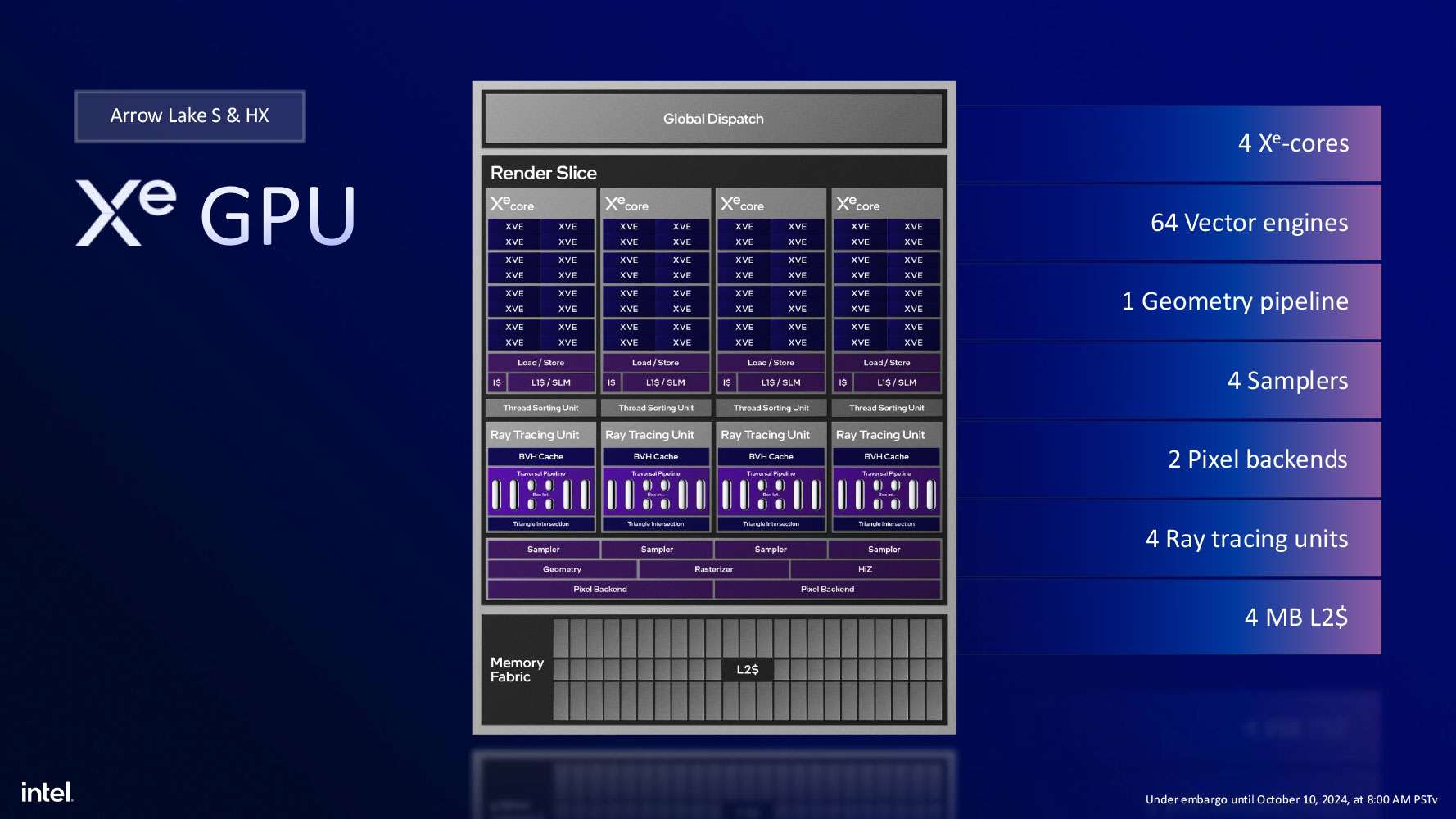
Overall, at the time of their release, Arrow Lake processors stand out as the most technologically advanced solutions in the desktop CPU market. They feature a sophisticated multi-chiplet design, utilize the most advanced manufacturing process for the main compute die, and integrate powerful GPU and NPU capabilities. Initially, five processor models were launched, offering varying specifications and price points.
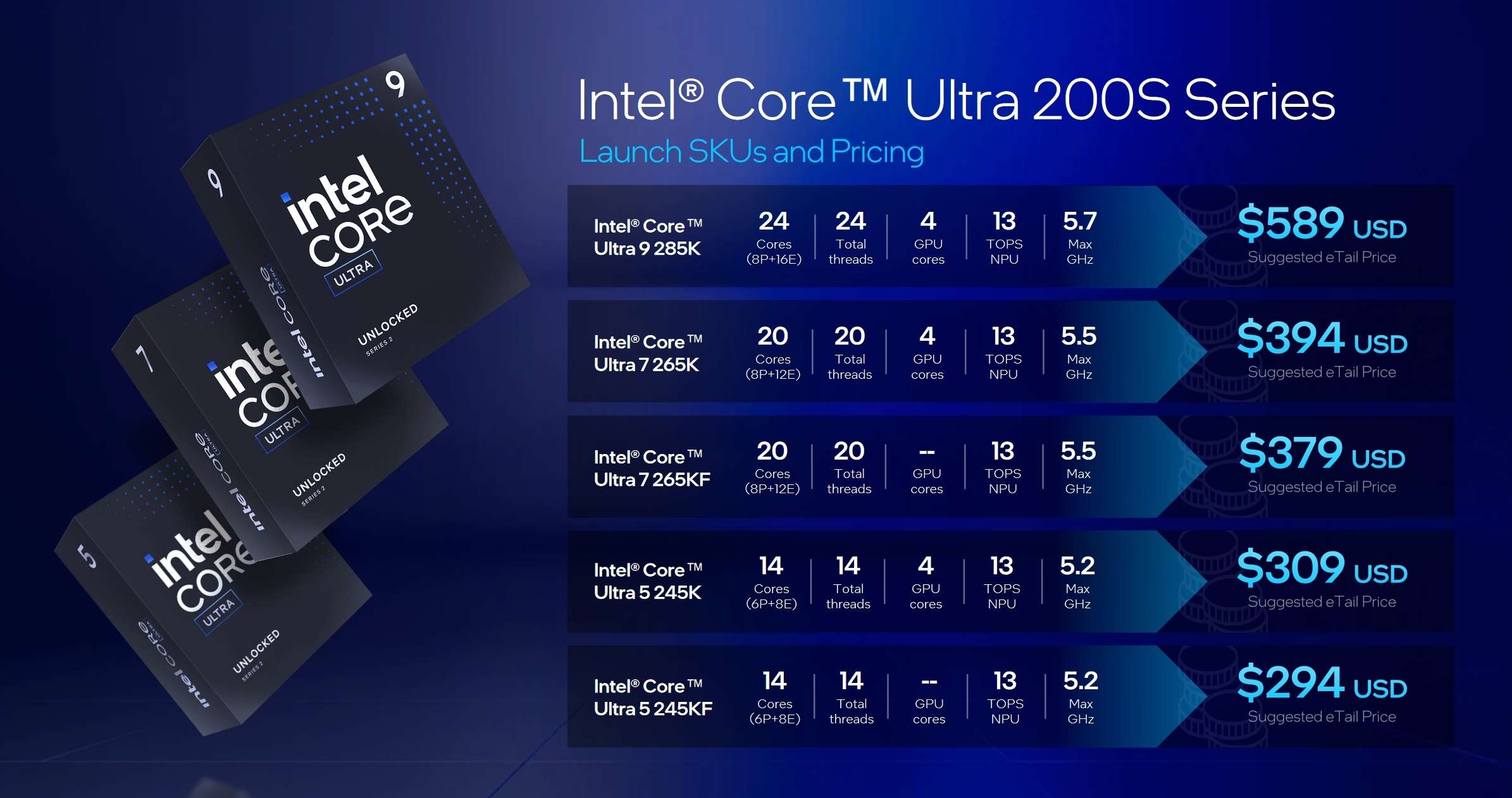
| P-nuclei | E-cores | Streams | P-core frequency, GHz | E-core frequency, GHz | L2/L3 cache, MB | Consumption, W | Price, $ | |
|---|---|---|---|---|---|---|---|---|
| Core Ultra 9 285K | 8 | 16 | 24 | 3.7-5.7 | 3.2-4.6 | 40/36 | 125/250 | 589 |
| Core Ultra 7 265K | 8 | 12 | 20 | 3.9-5.5 | 3.3—4.6 | 36/30 | 125/250 | 394 |
| Core Ultra 7 265KF | 8 | 12 | 20 | 3.9-5.5 | 3.3—4.6 | 36/30 | 125/250 | 379 |
| Core Ultra 5 245K | 6 | 8 | 14 | 4.2-5.2 | 3.6-4.6 | 26/24 | 125/159 | 309 |
| Core Ultra 5 245KF | 6 | 8 | 14 | 4.2-5.2 | 3.6-4.6 | 26/24 | 125/159 | 294 |
- Core Ultra 9 285K is a flagship processor with 8 P and 16 E cores and a maximum turbo frequency of 5.7 GHz (for comparison, the flagships of previous generations had frequencies of up to 6 GHz and even more).
- Core Ultra 7 265K(F) is a pre-top model with 8 P-cores and 12 E-cores (one of the four clusters with E-cores is disabled) and a turbo frequency of 5.5 GHz.
- Core Ultra 5 245K(F) are currently the youngest models of the family with the number of P-cores reduced to 6 and only eight E-cores (2 of 4 clusters are disabled) with a turbo frequency of up to 5.2 GHz.
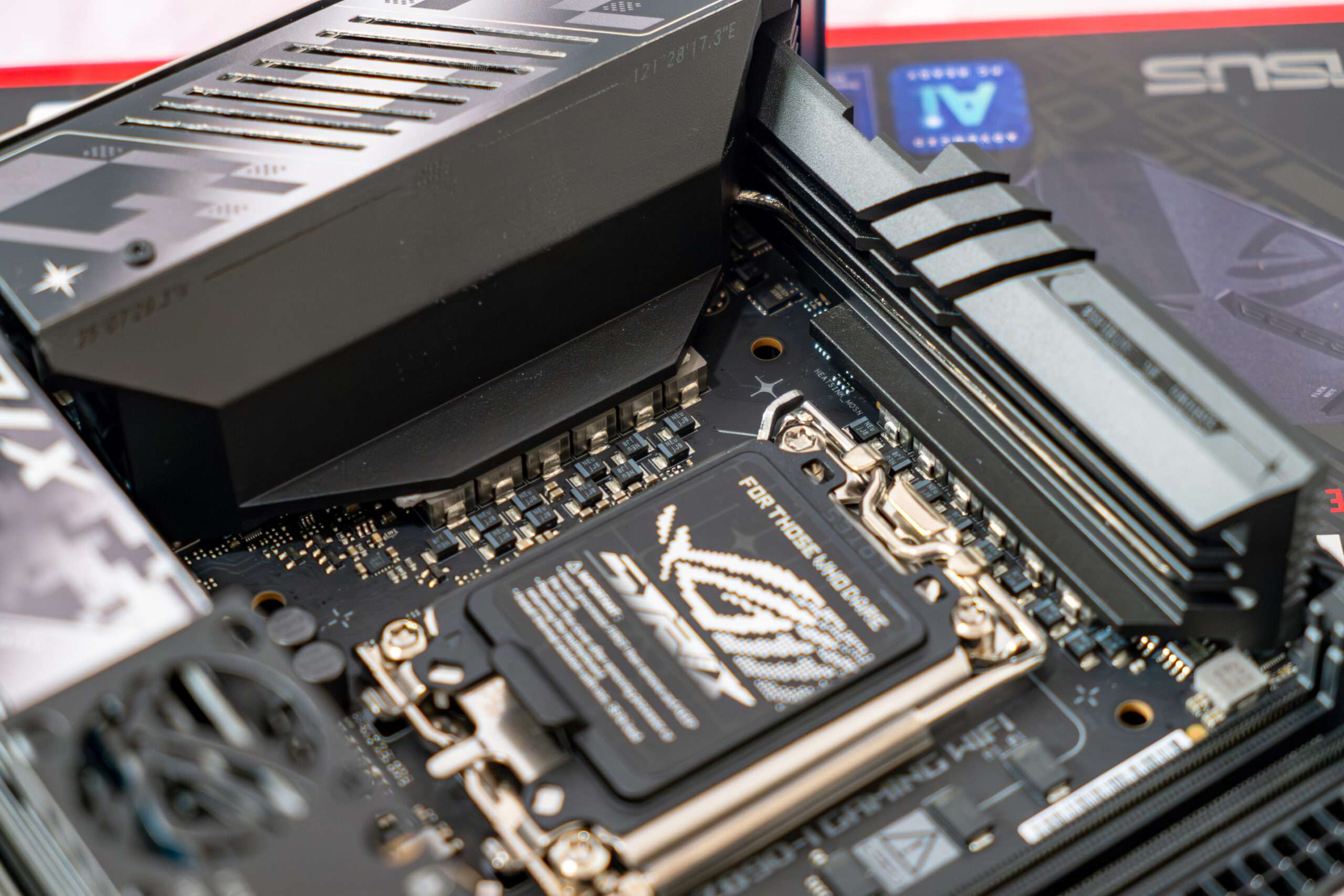
| Supported Processors | Intel Core Ultra 2xx |
|---|---|
| Processor socket | LGA 1851 |
| Chipset | Intel Z890 |
| Memory | 2×DDR5, up to 9200MT/s (XMP), up to 128GB, dual-channel (DIMM/CUDIMM) |
| Audio subsystem | 1 × Realtek ALC4082 (7.1) + ESS ES9219 DAC |
| Network controllers | 1×Intel i226-V Ethernet 2.5Gbps 1×Intel Dual Band Wireless BE200 (Wi-Fi7 802.11a/b/g/n/ac/ax/be (2.4/5/6GHz) + Bluetooth 5.4) |
| Expansion slots | 1×PCIe 5.0 x16 |
| Storage connectors | 2×SATA 6Gb/s (Z890) 1×M.2 (M.2_1, CPU, PCIe 5.0 x4 for 2230/2242/2260/2280 devices) 1×M.2 (M.2_2, CPU, PCIe 5.0 x4 for 2230/2242/2260/2280 devices)*
|
| USB ports | Rear USB (Total 9 ports) 2 x Thunderbolt™ 4 (2 x USB Type-C®) 1 x USB 20Gbps port (1 x USB Type-C®) 3 x USB 10Gbps ports (3 x Type-A) 1 x USB 5Gbps port (1 x Type-A) 2 x USB 2.0 ports (2 x Type-A)Front USB (Total 3 ports) 1 x USB 20Gbps connector (supports USB Type-C®) 1 x USB 5Gbps header supports 2 additional USB 5Gbps ports ROG STRIX HIVE II (Total 2 ports) 2 x USB 10Gbps ports ( 1 x USB Type-C®+ 1 x Type-A) ROG FPS Card (Total 3 ports) 2 x USB 2.0 headers support additional 3 USB 2.0 ports * USB Type-C® power delivery output: max. 5V/3A |
| Rear panel connectors | Rear USB (Total 9 ports) 2 x Thunderbolt™ 4 (2 x USB Type-C®) 1 x USB 20Gbps port (1 x USB Type-C®) 3 x USB 10Gbps ports (3 x Type-A) 1 x USB 5Gbps port (1 x Type-A) 2 x USB 2.0 ports (2 x Type-A)1x RJ-45 1 × HDMI (output) 2x antenna ports CMOS reset button BIOS flash back button |
| Other internal elements | 24-pin ATX power connector 1 8-pin EPS12V power connector 1 M.2 (E-key) slot, occupied by a wireless network adapter 1 connector for connecting a USB 3.2 Gen2 Type-C port 1 connector for connecting 2 USB 3.2 Gen1 ports 3 connectors for connecting 4-pin fans and ZSO pumps 2 connector for connecting an addressable ARGB strip 1 PCIe version switch 1 connector for a thermal sensor |
| Form factor | Mini-ITX (170×170 mm) |

Peripheral functionality: USB ports, network interfaces, I/O
Now it’s the turn of USB ports and other I/O. And let’s start with the back panel, where most of them are displayed.
On the back I/O panel of connections including 1x HDMI (iGPU), 3x USB-A 3.2 Gen2 (10Gb/s), 2 x USB-A 2.0 (480Mb/s), 2x USB-C USB 4.0 Thunderbolt 4 (Intel JHL8540), 1x 2.5GBase-T (Intel I225-V), Intel WiFI 7, Also present on the rear panel feature for the bios flashback is included.
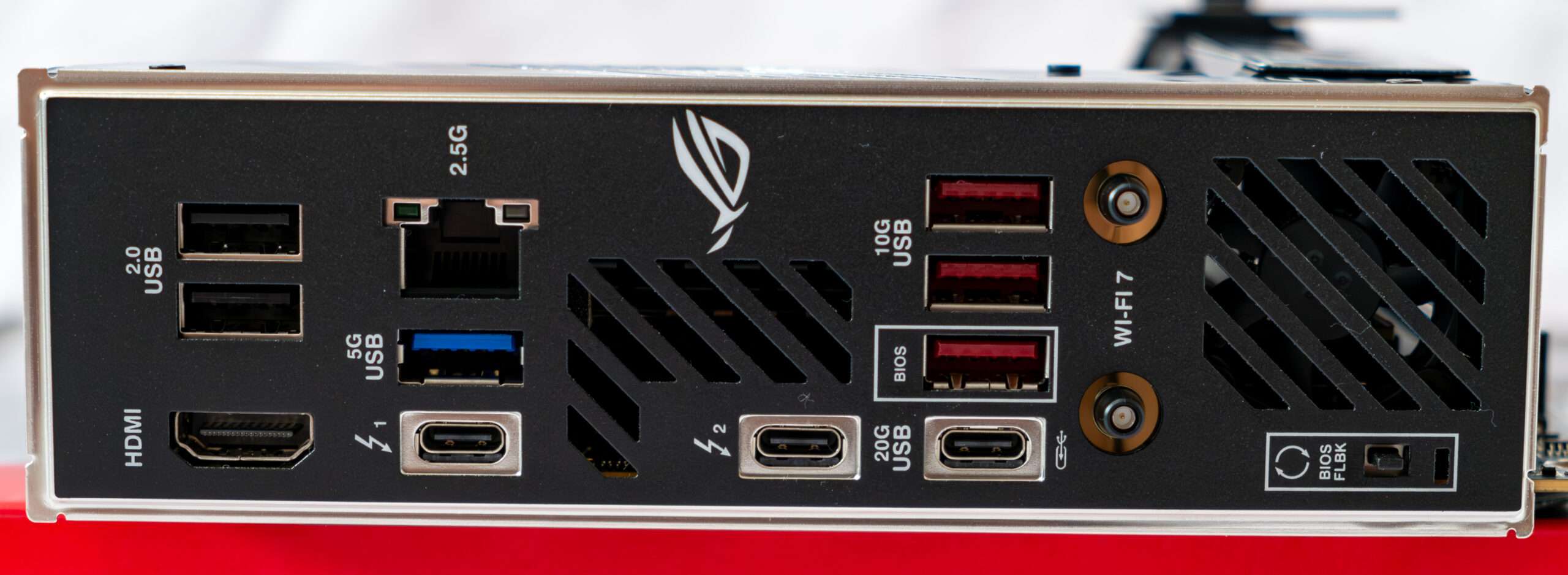
The ASUS board has two DIMM slots for installing memory modules. The board supports unbuffered DDR5 (non-ECC) memory, and the maximum memory capacity is 128 GB. Of course, XMP profiles are supported.
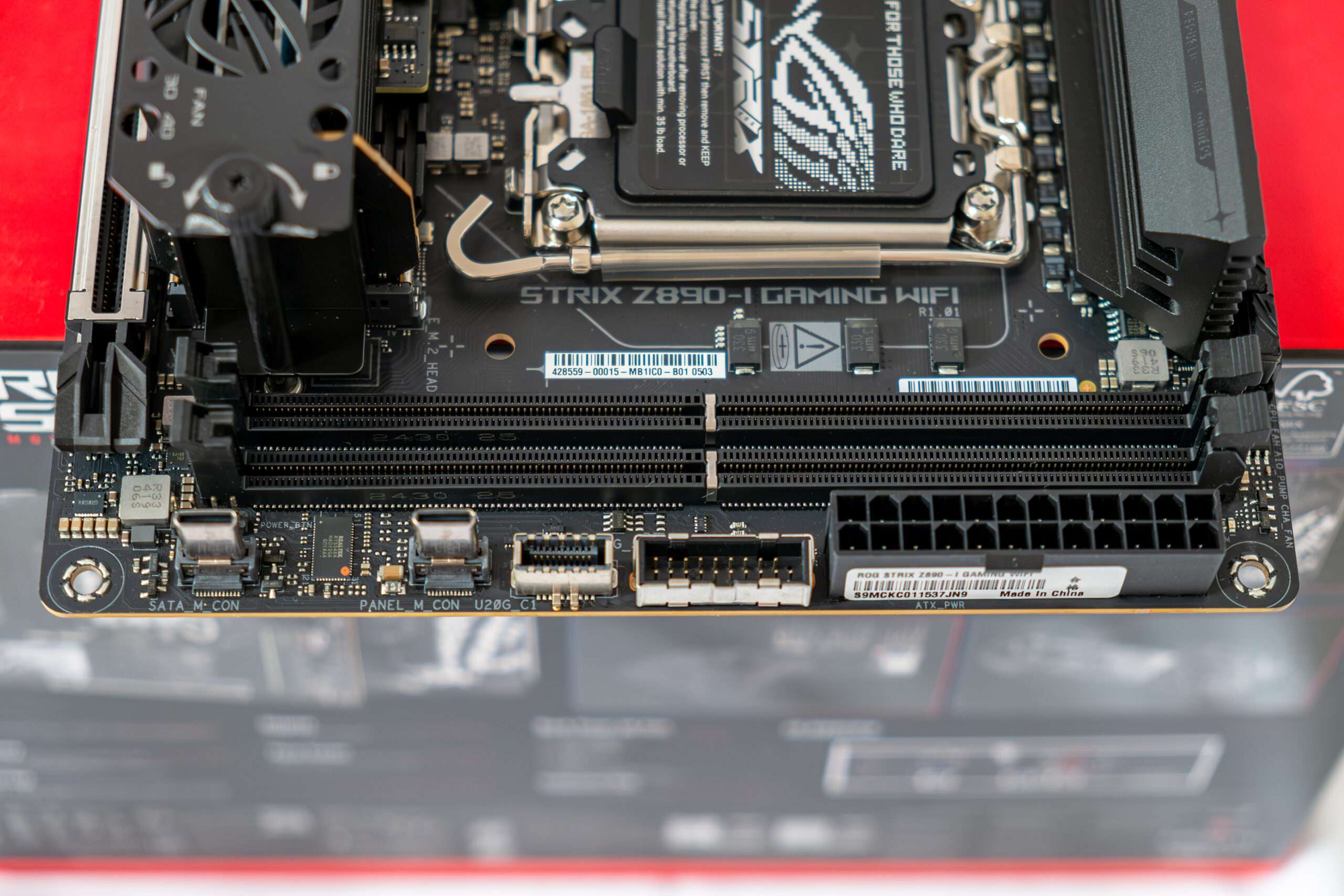
Two USB Type- C Port for ROG FPS-II Card
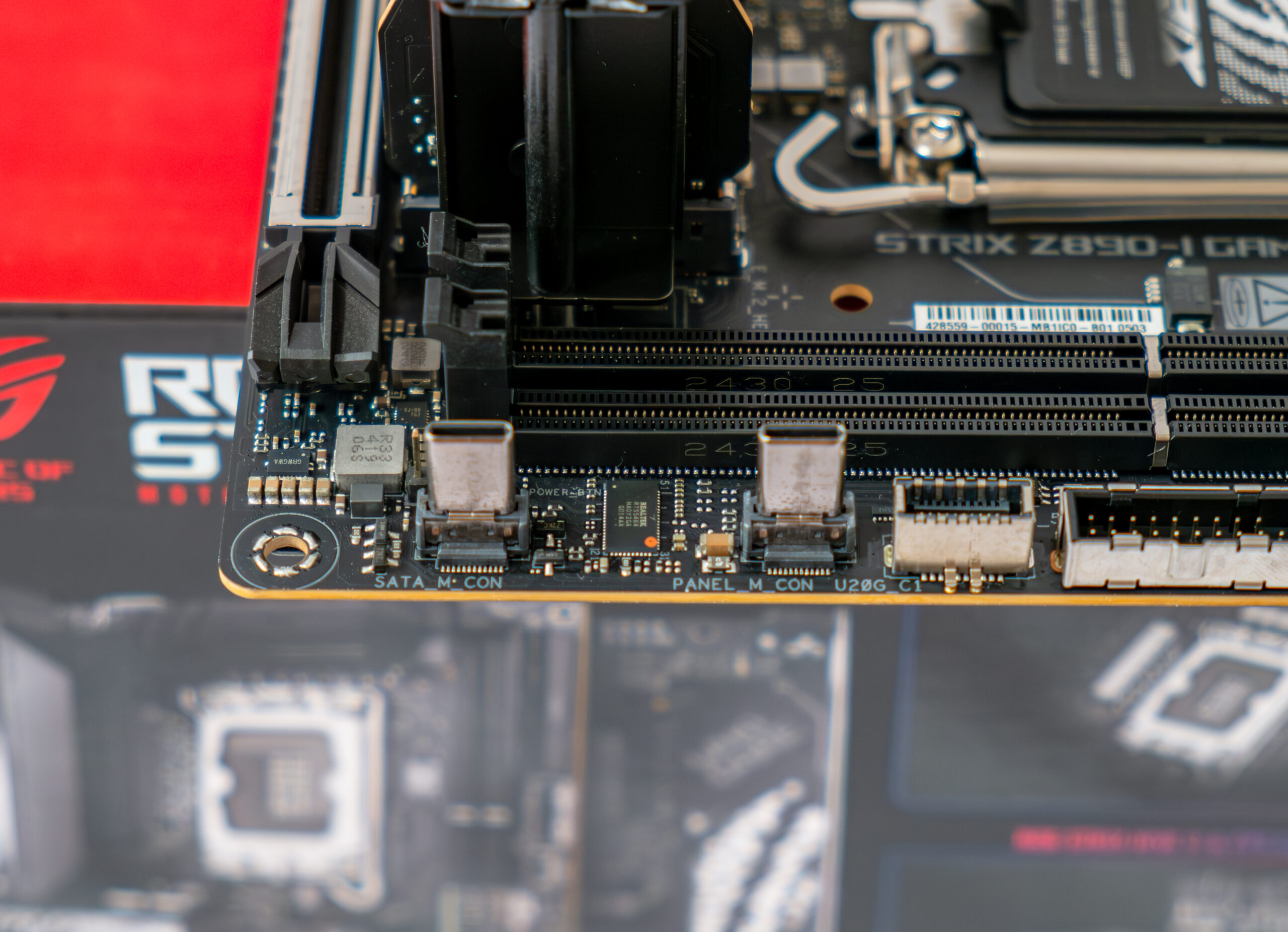
The ROG FPS card groups I/O onto a vertically-mounted card, saving valuable motherboard space and tidying cable management. Connections can also be made before the card is installed, greatly simplifying installation in cramped quarters. It features two SATA ports, front panel headers, two USB 2.0 headers (for up to three USB 2.0 connections), a CPU_OV jumper for extreme overclocking and a PCIe alteration mode switch.
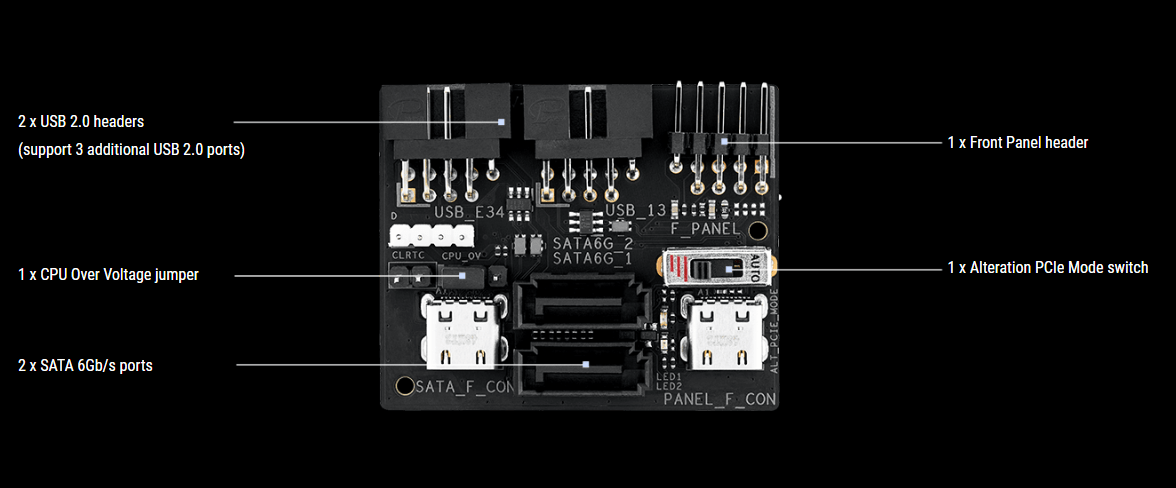
The PCIe x16 slot has stainless steel and zinc alloy reinforcement that increases durability (which can be important if you change graphics cards quite often, but more importantly, such a slot can more easily withstand bending loads in case of installing a very heavy top-level graphic card. In addition, such protection protects the slot from electromagnetic interference.
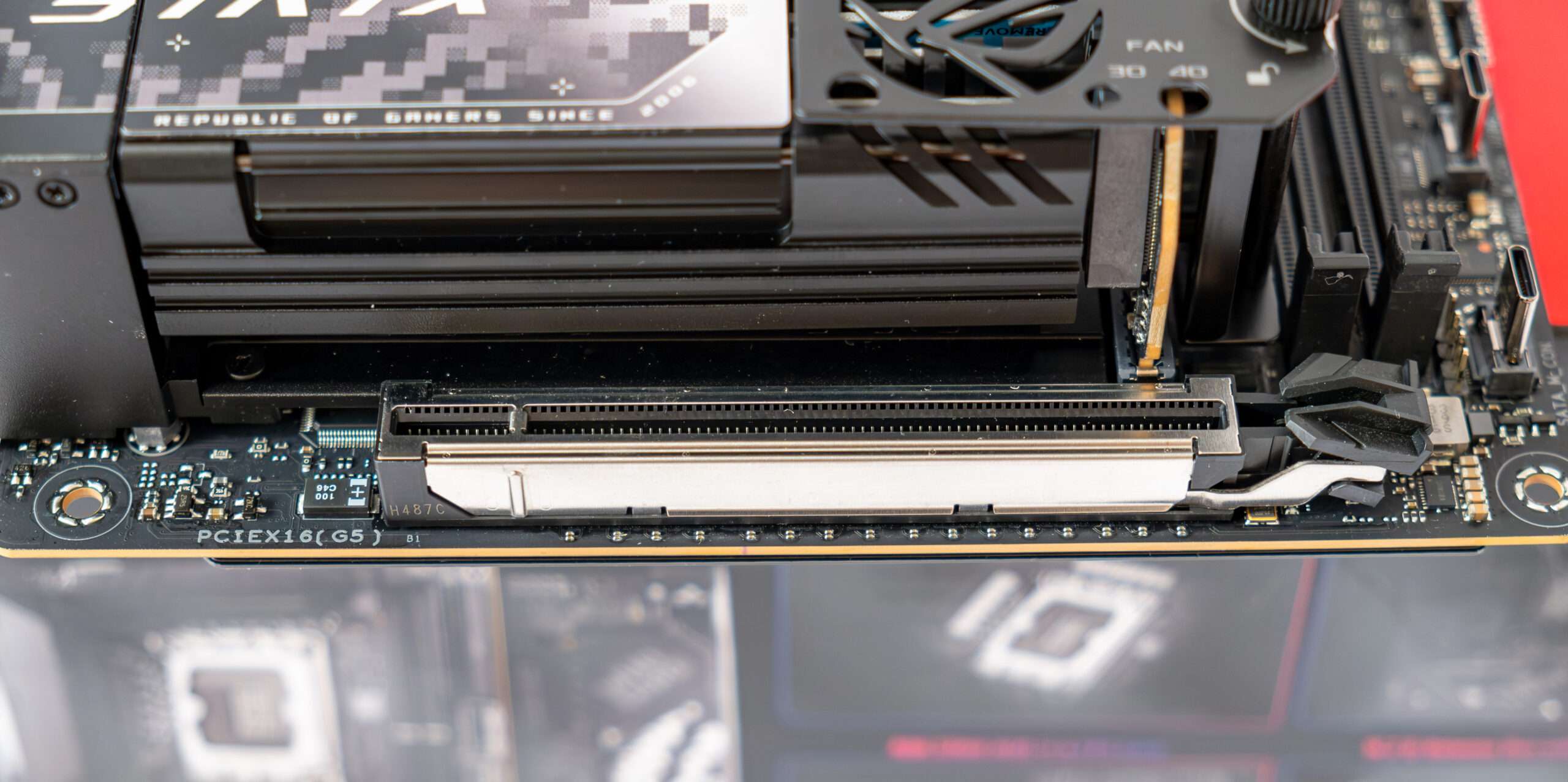
The PCIe x16 (G5) slot features a convenient Q-Release Slim mechanism for easy removal of video cards. Simply lift the video card near the mounting bracket area, and the lock will disengage automatically.
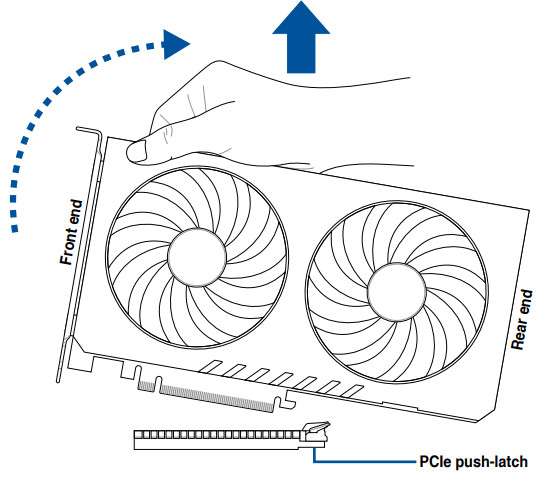
The ROG team has completely redesigned the dual M.2 slots. Each M.2 slot supports blazing-fast read and write speeds of up to 16 GB/s, while the remaining slot still delivers an impressive 8 GB/s transfer rate. To manage the heat from next-gen storage, both M.2 slots are equipped with substantial heatsinks for effective thermal dissipation.
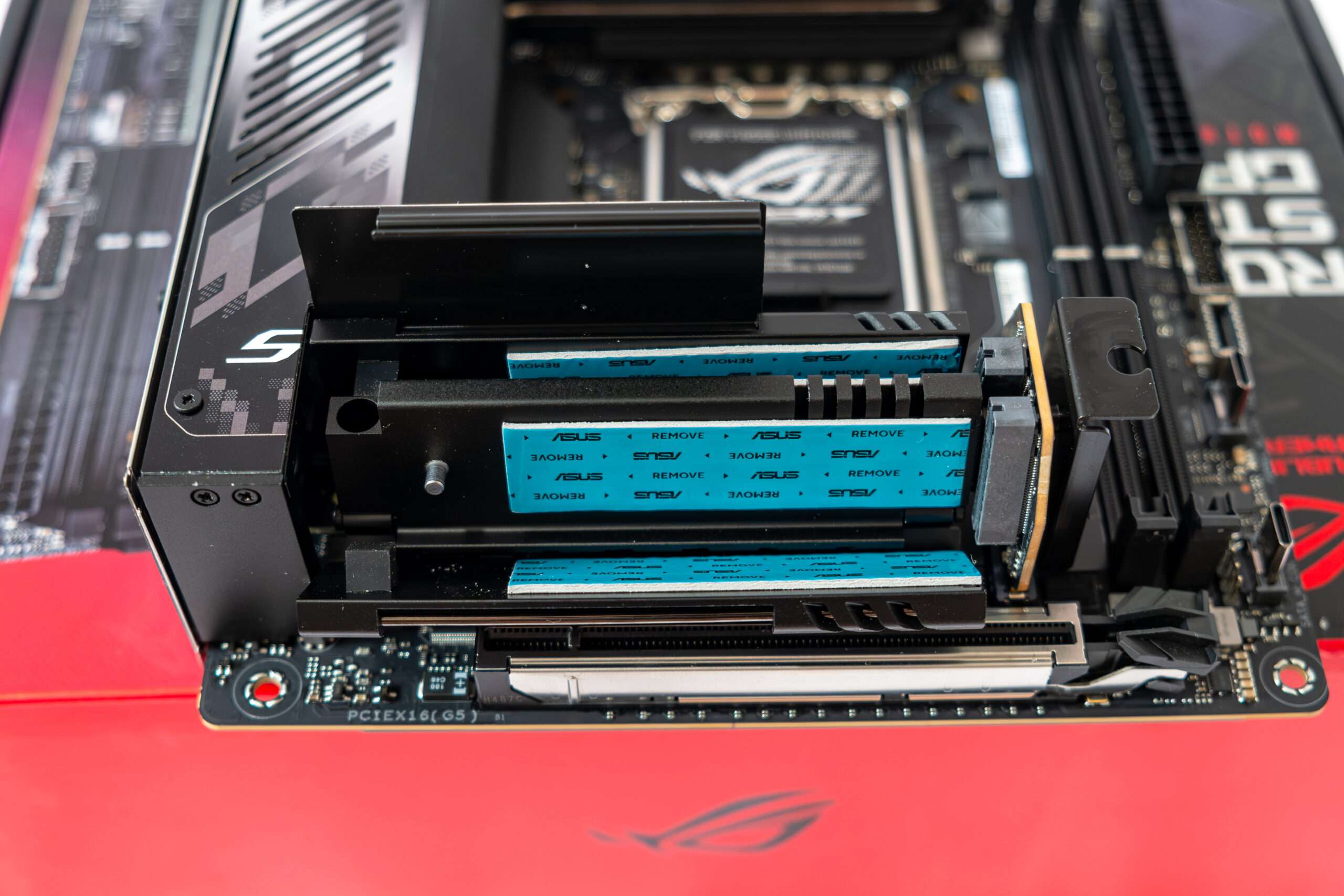

The “M.2 Q-Release Duo,” mounted on top of the chipset heatsink in a two-tier structure, is fully cooled by a small-diameter fan integrated into the I/O panel. Additionally, the top of the “M.2 Q-Release Duo” is designed to accommodate an optional 30mm or 40mm fan for extra cooling, if needed.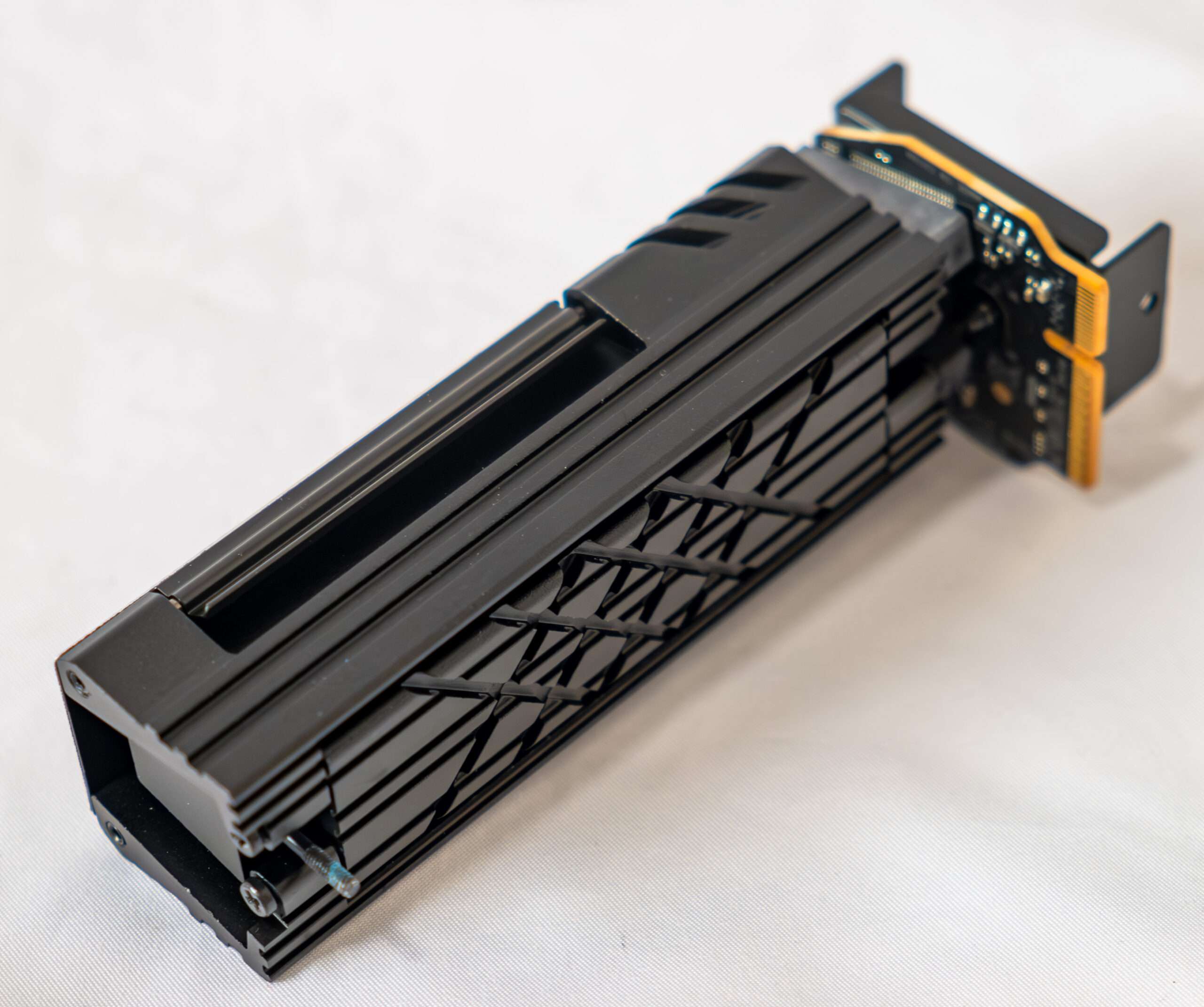
The “Z890 ZF Card” daughterboard is equipped with an ARGB 2 chip, featuring two ARGB Gen2 headers and one fan header.
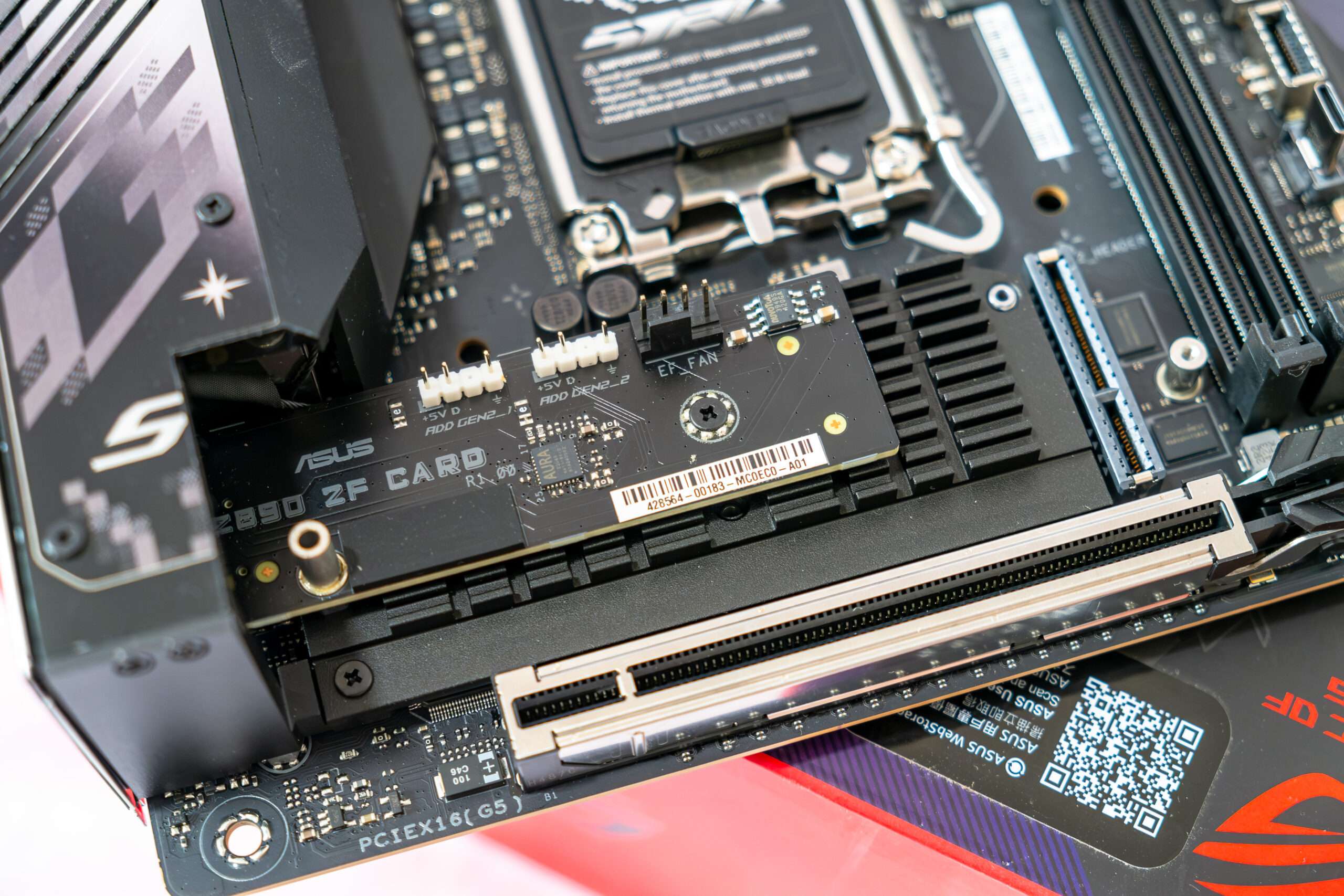
A Delta Electronics ASB0312HP-00 12V 0.20A 4-wire 30mm cooling fan is positioned to blow directly towards the M.2 SSD and PCH heatsink, helping to reduce heat and maintain optimal temperatures.
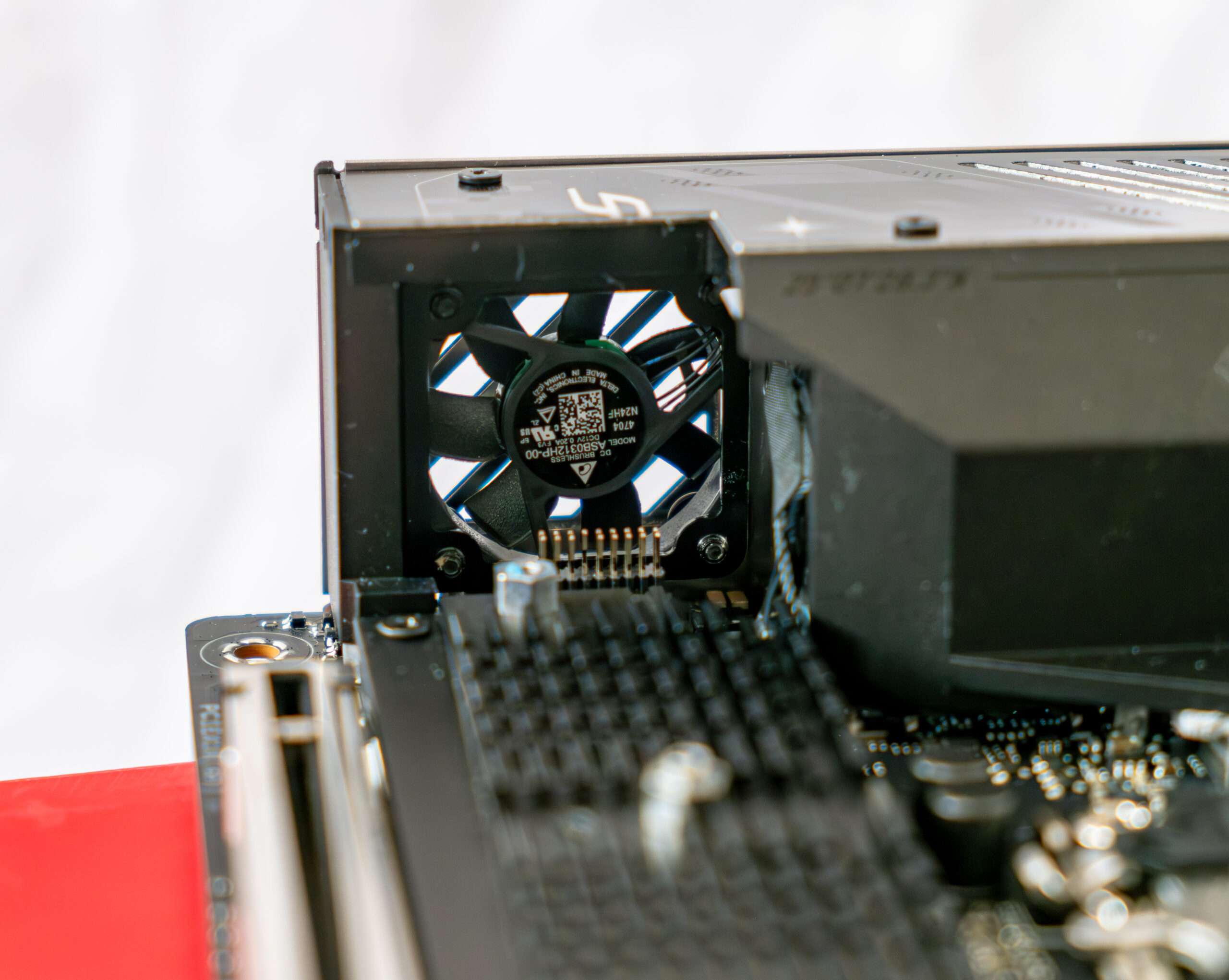
A black heatsink is used to cool down the Intel Z890 PCH chipset, ensuring efficient heat dissipation and stable performance.
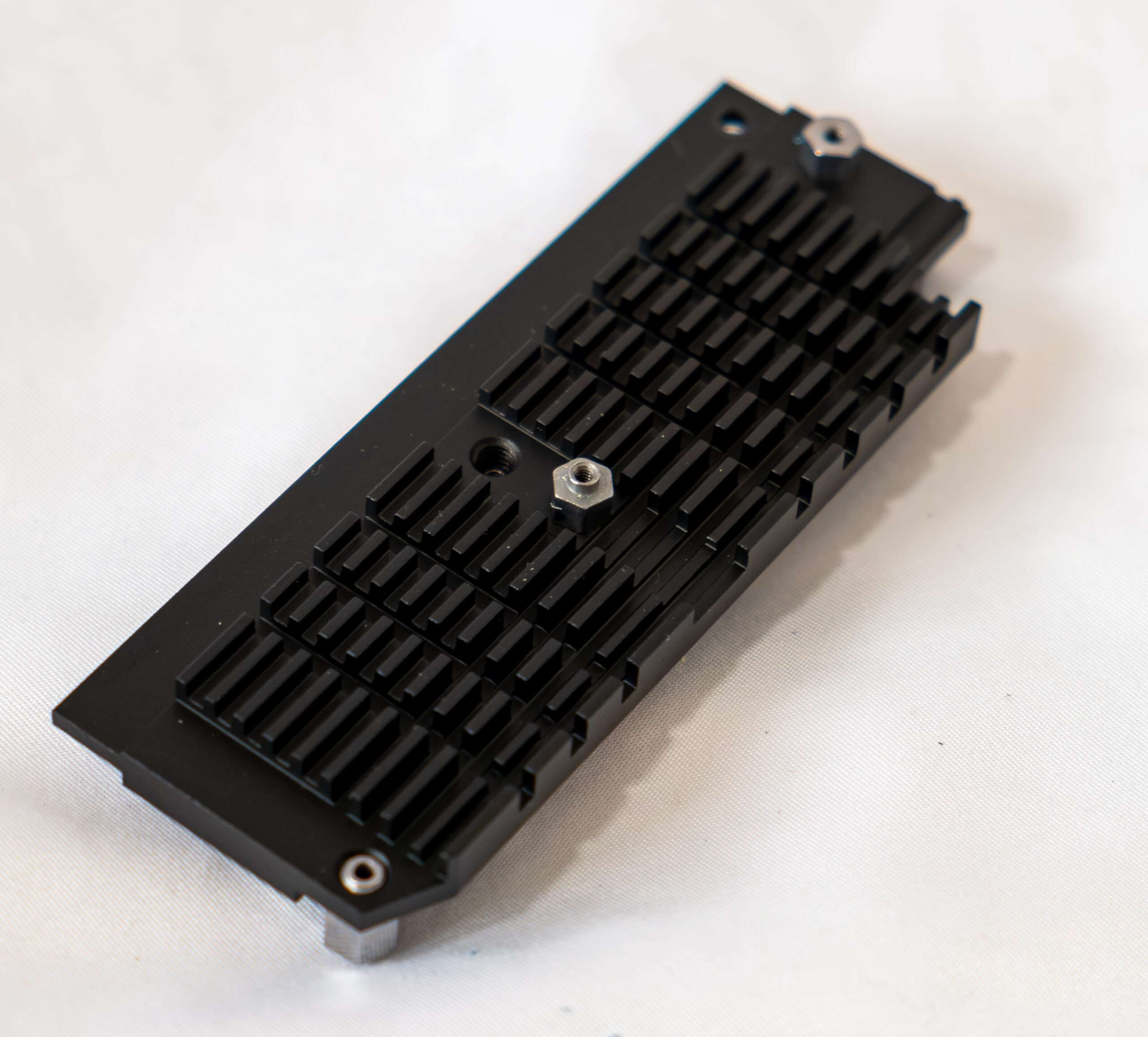
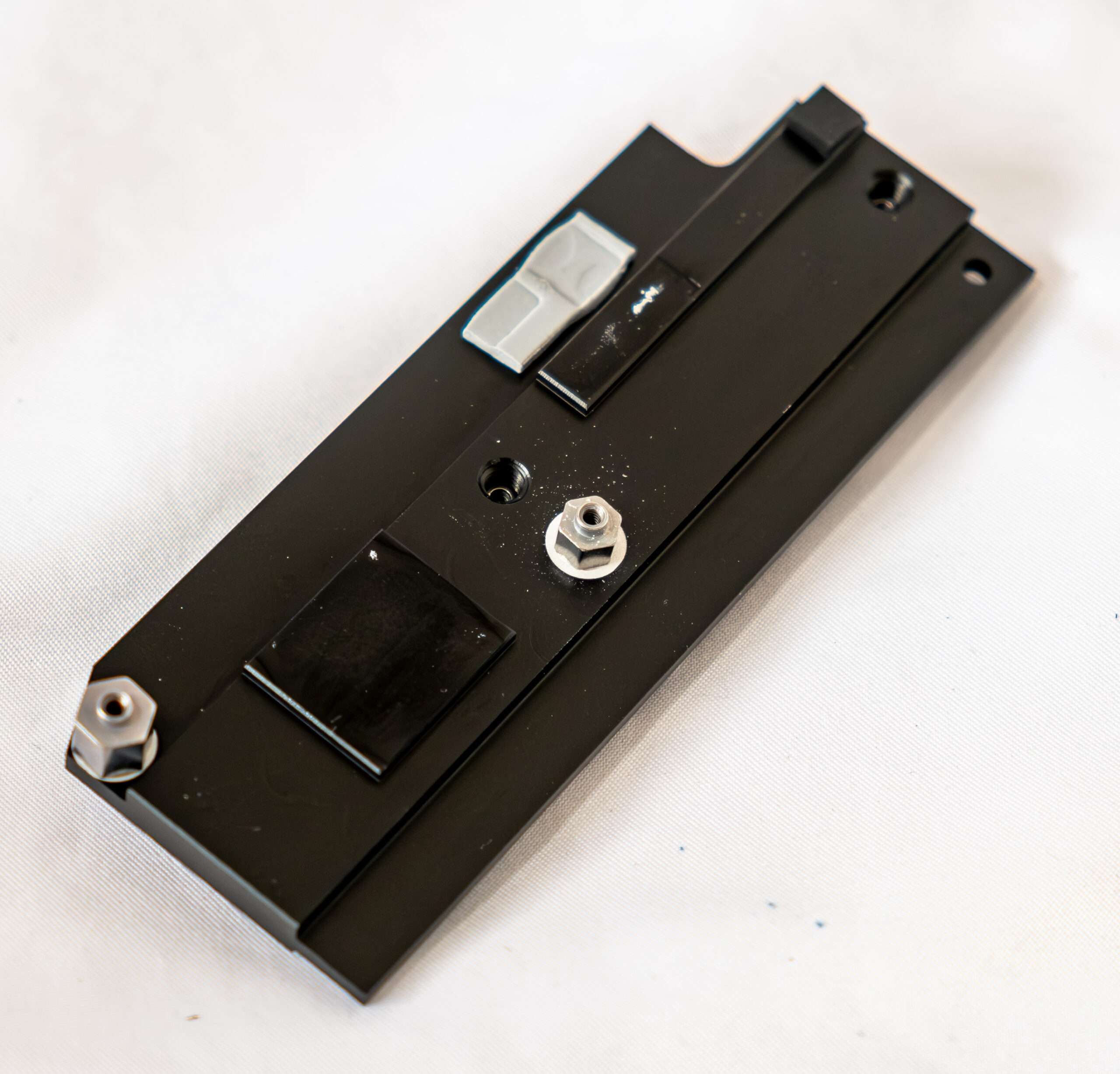
The Z890 chipset supports a total of 42 input/output lanes, which can be allocated as follows:
- Up to 10 USB 3.2 Gen1/2 ports (with up to 5 ports supporting USB 3.2 Gen2x2)
- Up to 14 USB 2.0 ports (with lines also used to support 3.2 ports, and each USB 3.2 Gen2x2 port requiring two USB 3.2 Gen2 lanes)
- Up to 8 SATA 6Gbps ports
- Up to 24 PCIe 4.0 lanes
In total, there are 60 HSIO (High-Speed Input-Output) lanes (processor + chipset), highlighted above in bold.
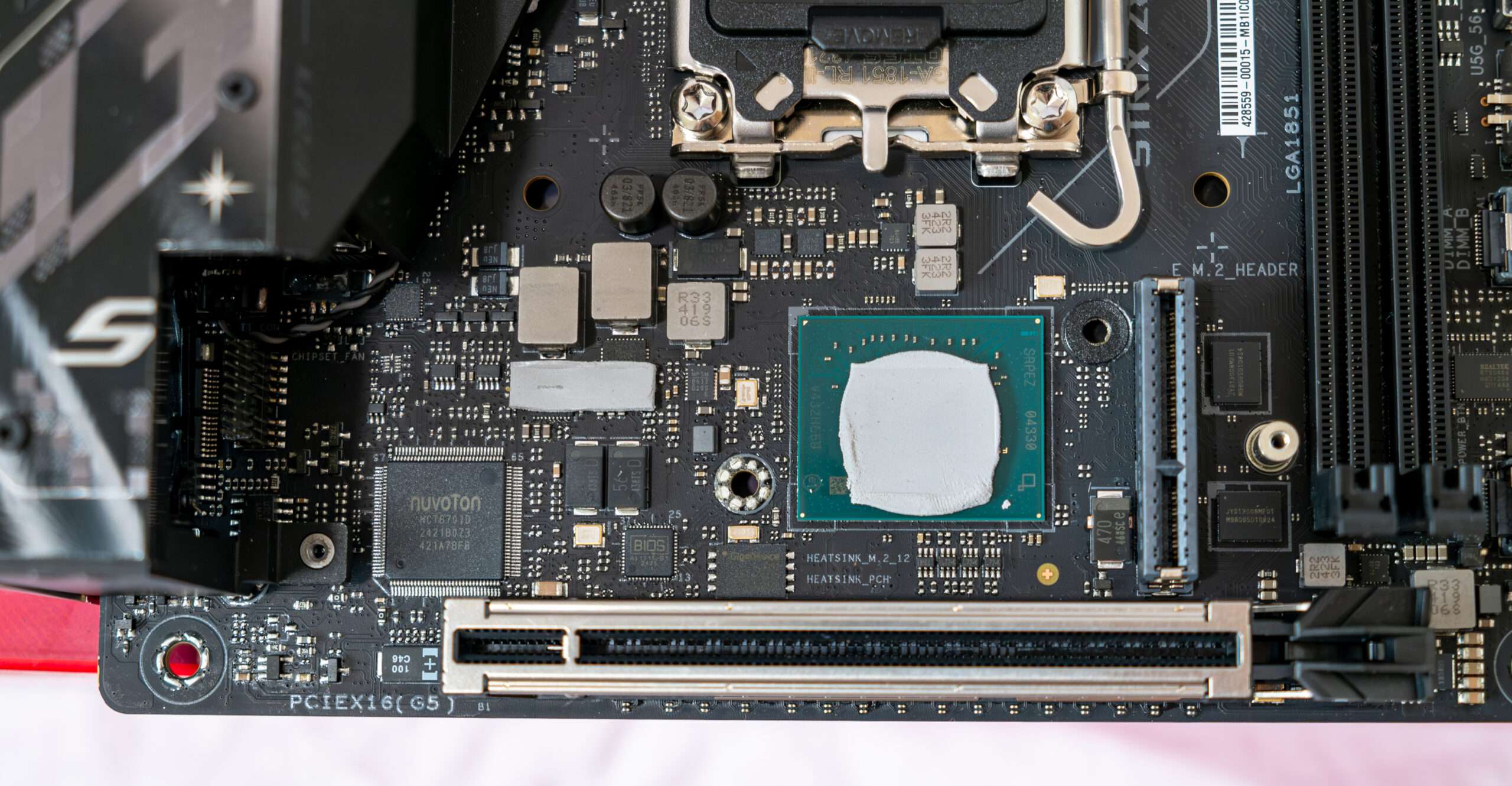
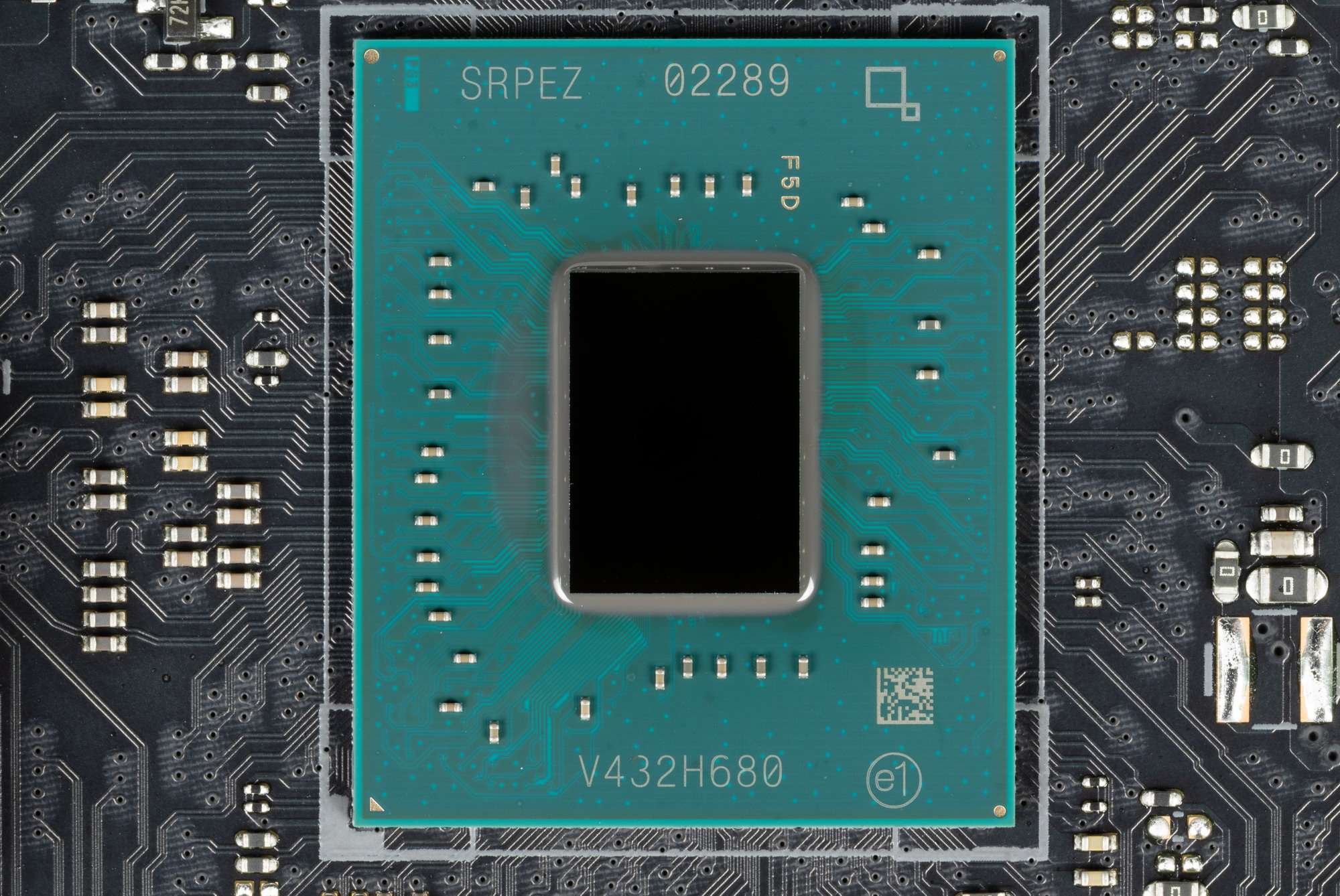
The ROG Z890-I Gaming WiFi requires two Delta 30mm fans to blow air across the VRM and M.2 heatsinks, helping to prevent overheating and maintain stable performance.
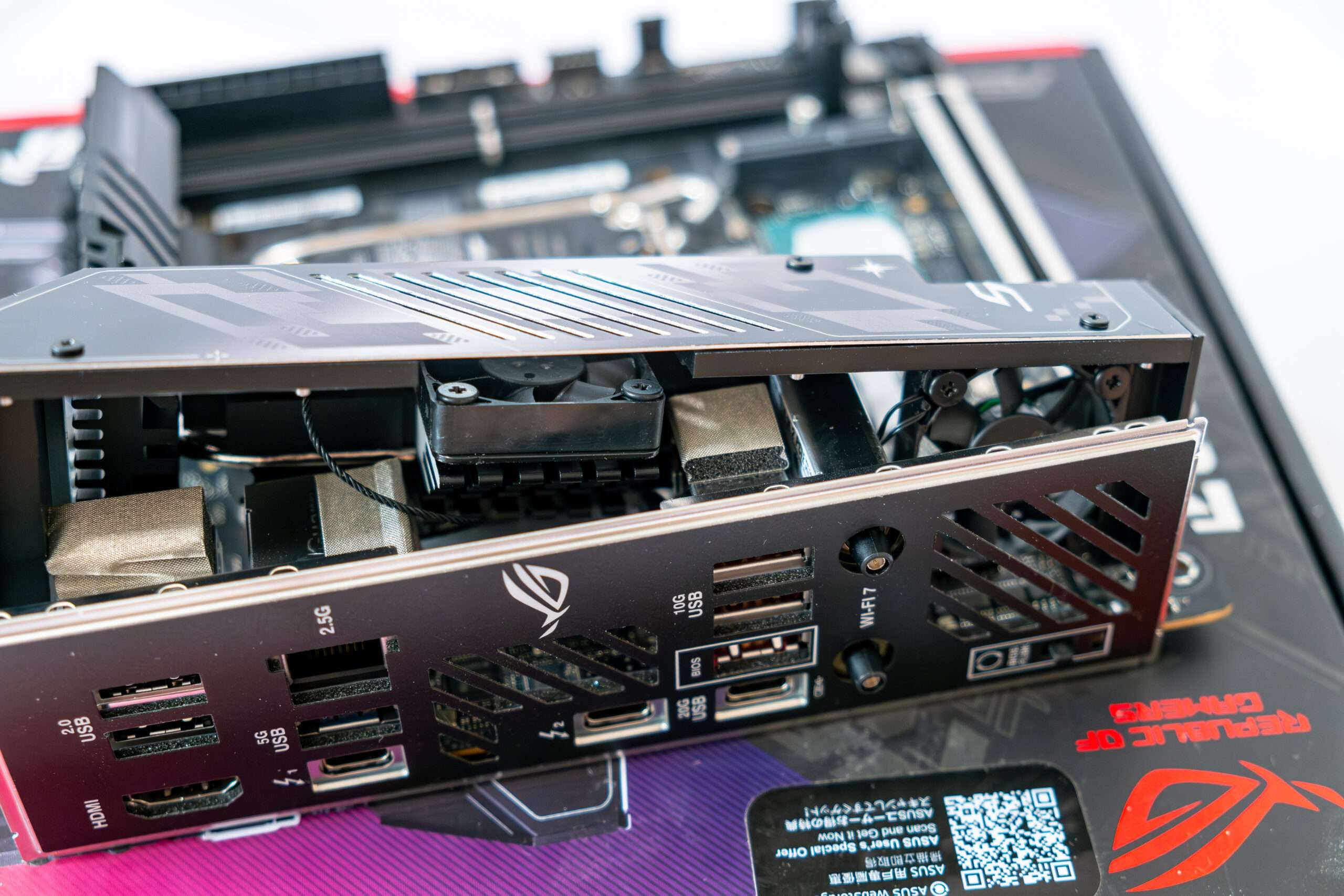
Power Phase Design & Component
The processor power supply circuit is designed according to the 10+1+2+1 scheme (a total of 14 phases: 10 on VCore (processor core), 1 on iGPU (integrated graphics core), 2 on VCCSA (System Agent, ring bus) and 1 on VNNAON (power saving management).
- Ten VCore phase channel has a superferrite choke and MP87610(110 A) from Monolithic Power Systems
- One VCCGT phase channel has a superferrite choke and MP87691 (90 A) from Monolithic Power Systems
- Two VCCSA phase channel has a superferrite choke and MP87610 (110 A) and MP2940C PWM controller from Monolithic Power Systems.
- One VCCAON phase channel has a superferrite choke and MP87681 (80 A) from Monolithic Power Systems.
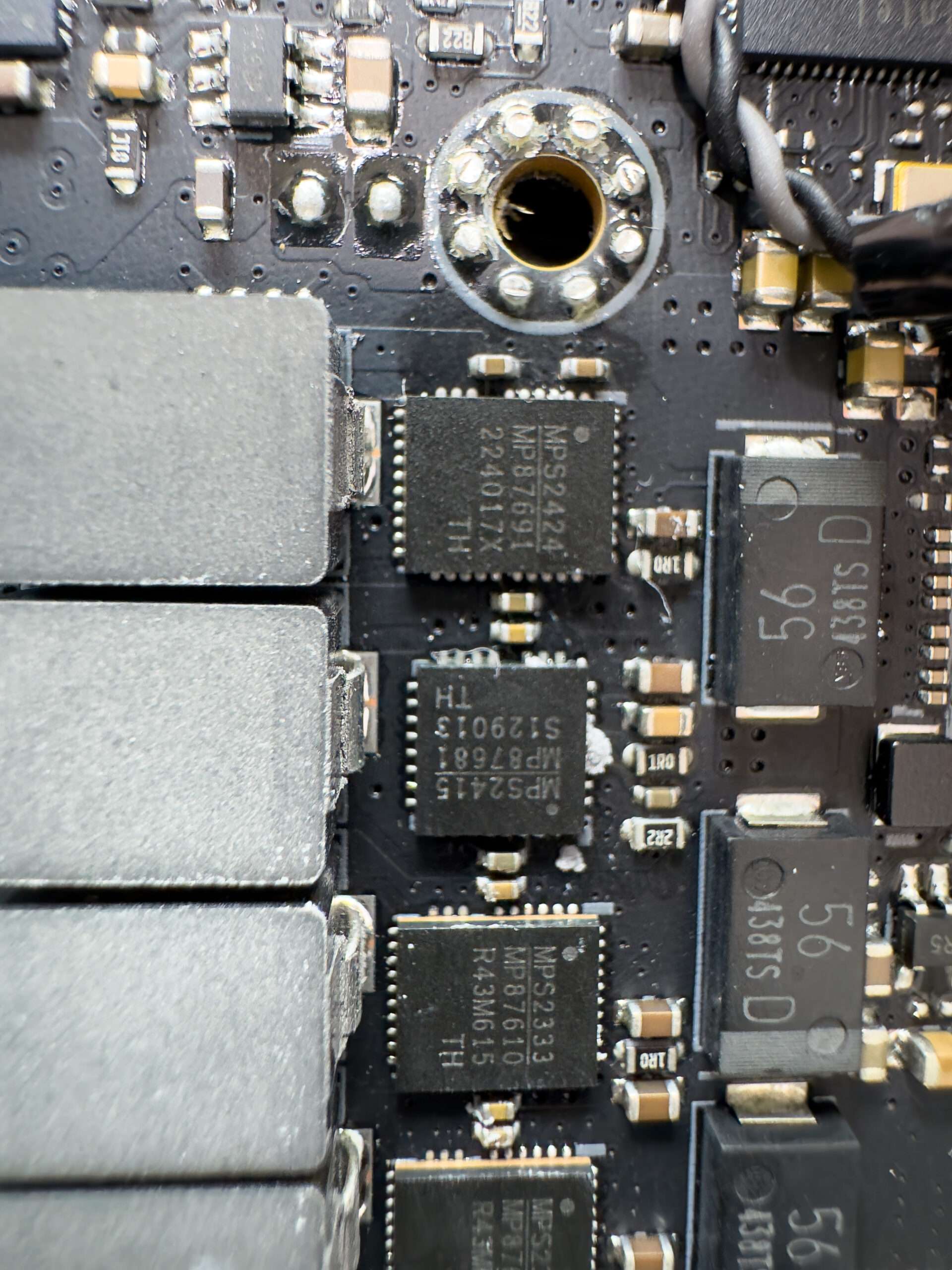
The control of the VCore, VNNAON, and iGPU circuits is managed by the proprietary Digi+ ASP2432 PWM controller.
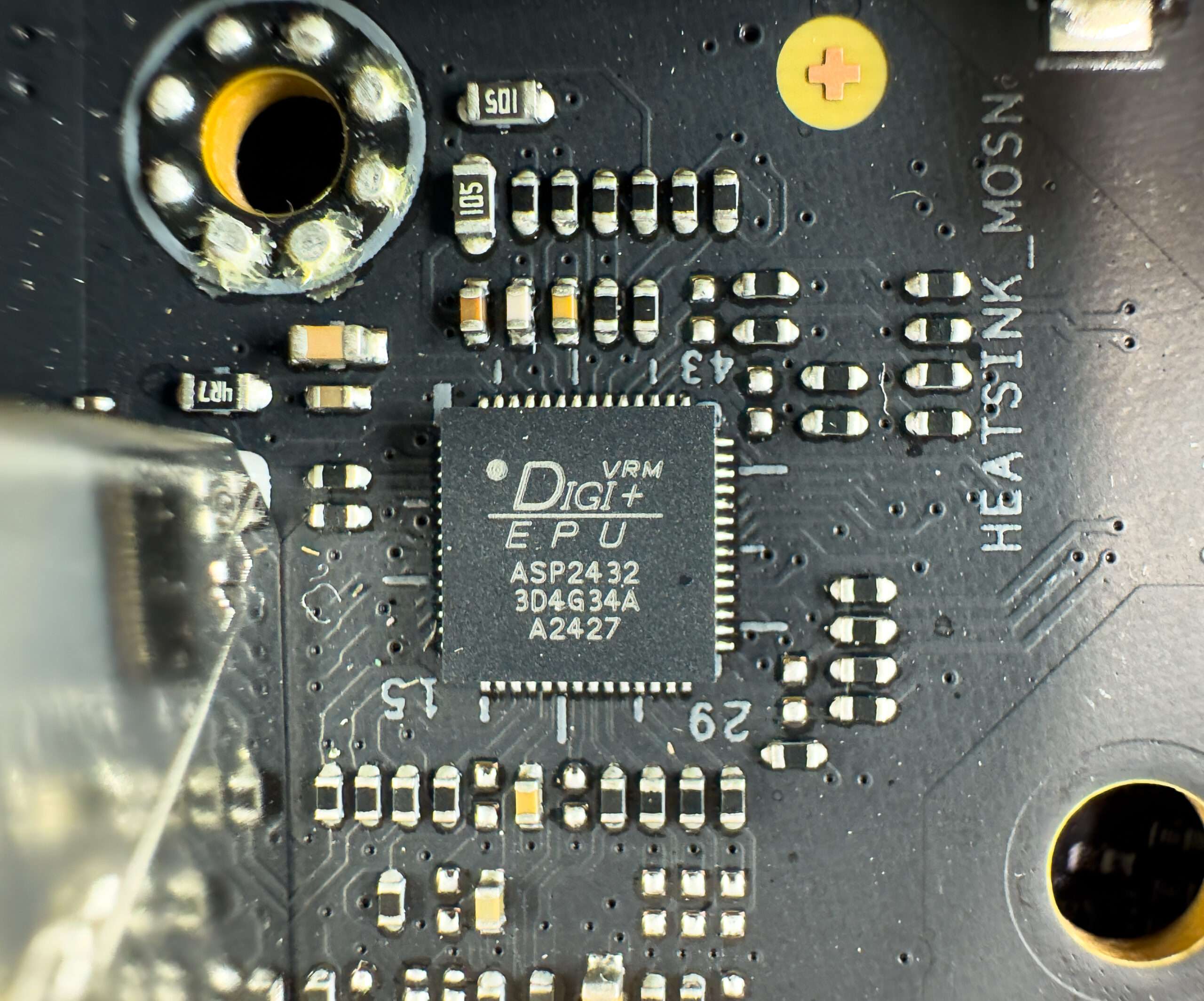
- Two Intel JHL9040R for ThunberBlot 4/ USB 4 interface.
- One Realtek RTS5439 chip is used to support Power Delivery (PD) and other functions of the Type-C interface.
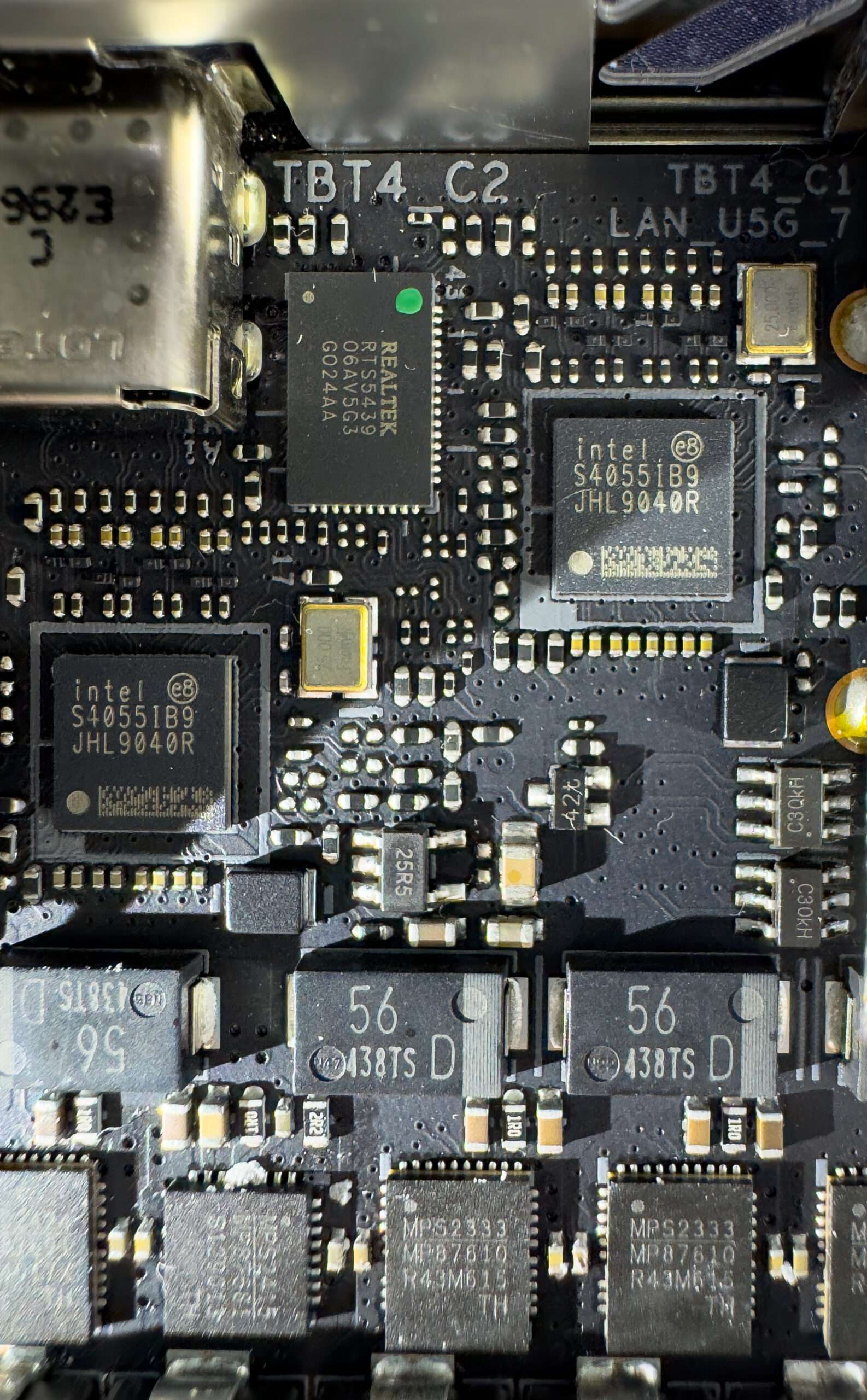
It’s important to note that the motherboard can provide PCIe 5.0 to the M.2_1/2 slots, but if M.2_2 slot are occupied by SSD module, the PCIe x16_1 slot will be limited to only 8 PCIe 5.0 lanes.
As a result, this motherboard features a redistribution of PCIe lanes, which makes JYS13008MF01 Linear multiplexers necessary for managing the bandwidth allocation.
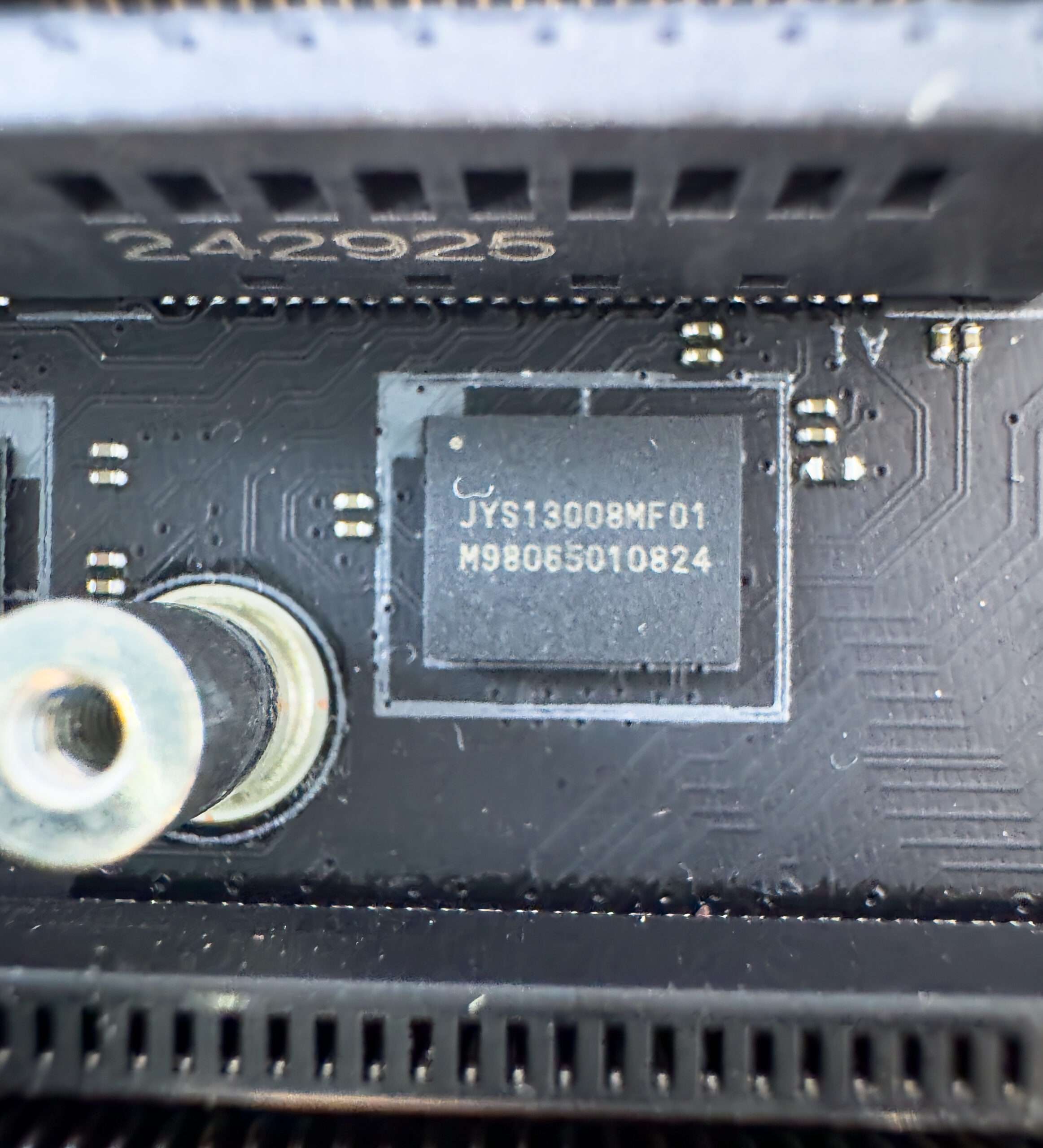
The Nuvoton NCT6701 controller is responsible for monitoring the motherboard’s status and coordinating the operation of all CO (Centralized Onboard) sockets.

- AI 1315-B1 dedicated chip that provides BIOS Flashback function
- GigoDevice is a SPI chip for BIOS

The ENE KB1724QA chip is responsible for controlling AI automatic overclocking and other related functions.
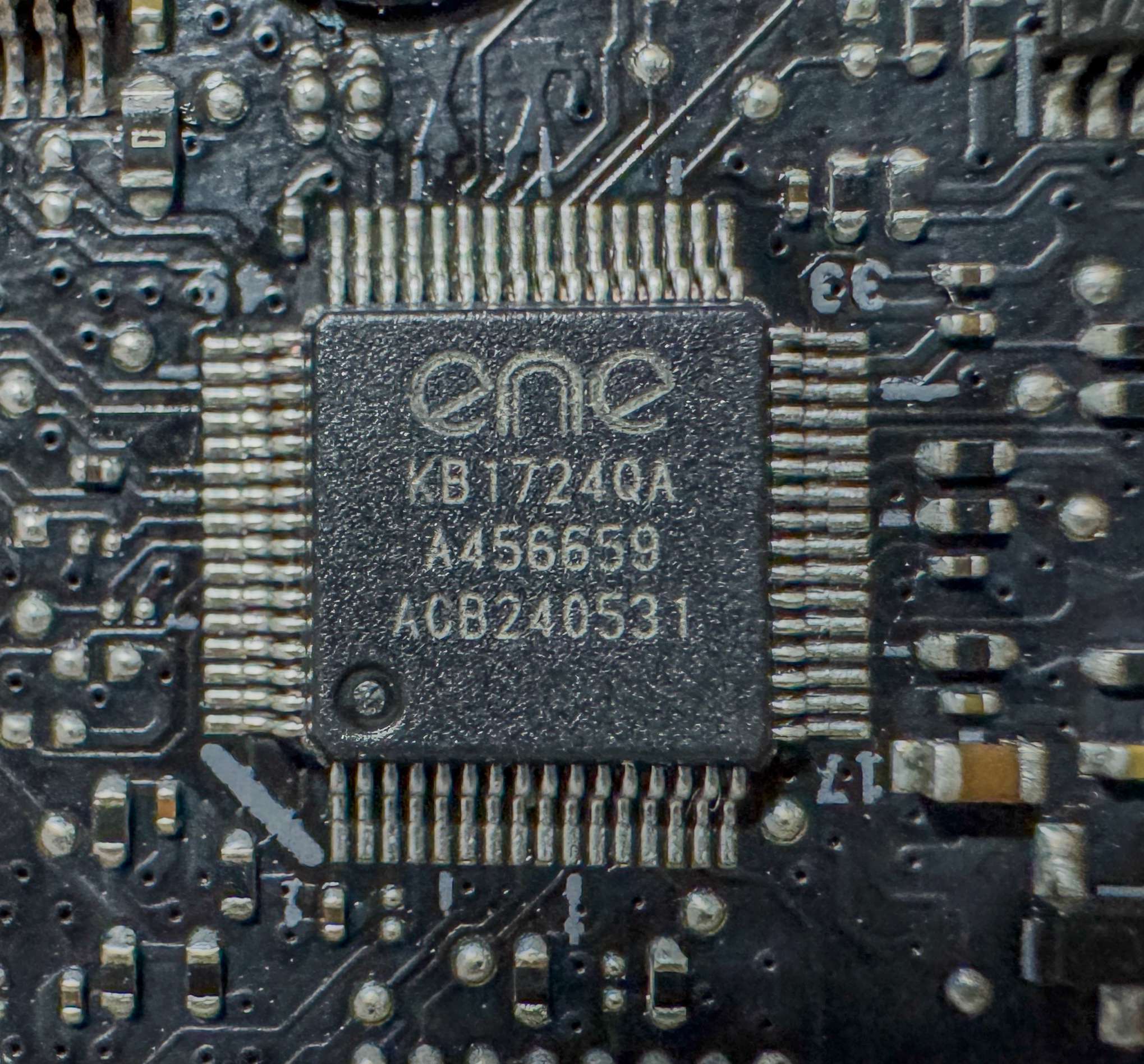
ROG STRIX HIVE II
The all-new ROG Strix Hive II brings critical controls and I/O within arm’s reach, moving them from the cramped quarters of an SFF chassis to a compact peripheral that sits on the desktop. DIY-friendly buttons and diagnostic LEDs are brought front and center along with a large volume dial. On the sides, a varied group of I/O ports handle audio input and output and provide convenient connectivity for grab-and-go peripherals.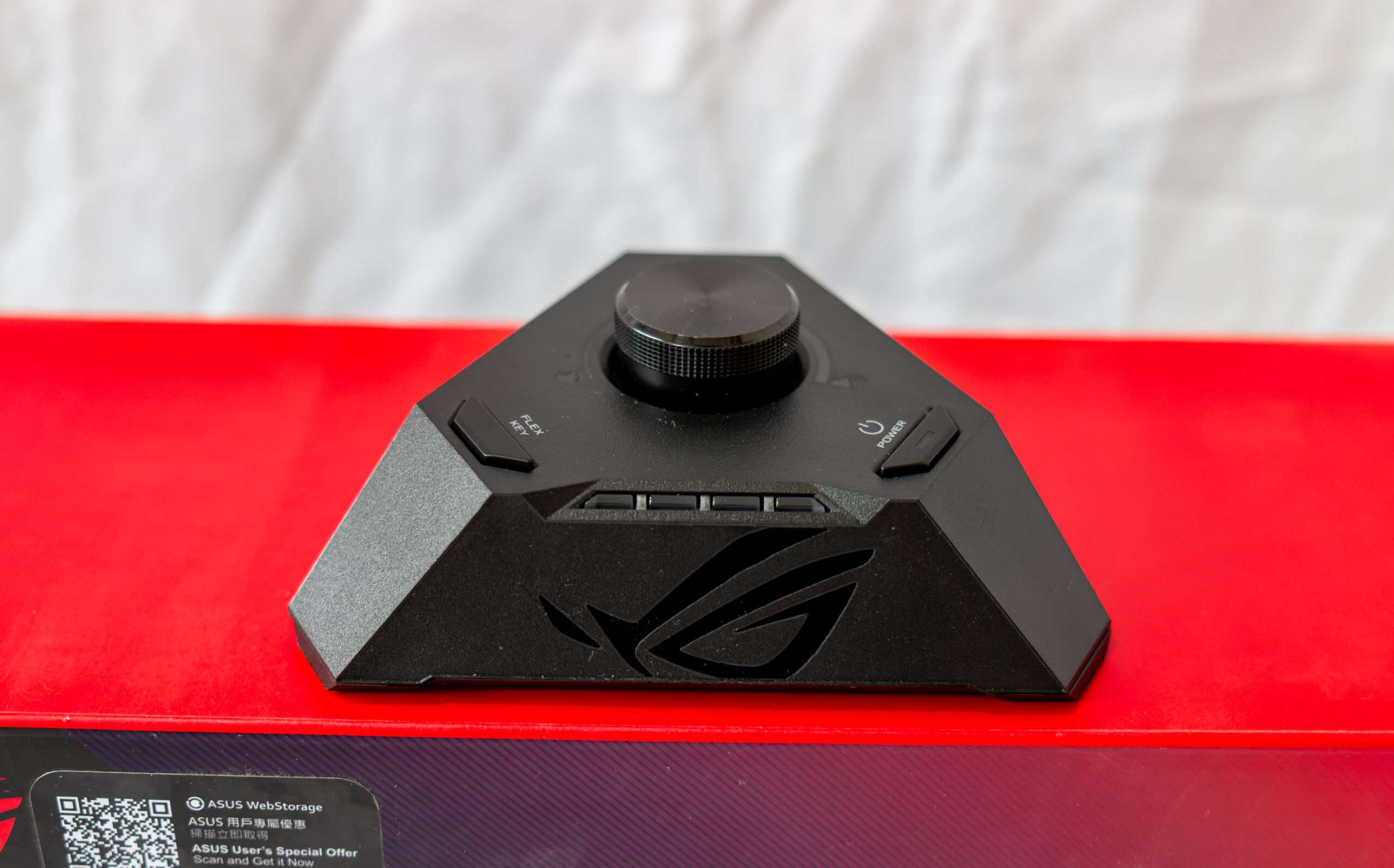
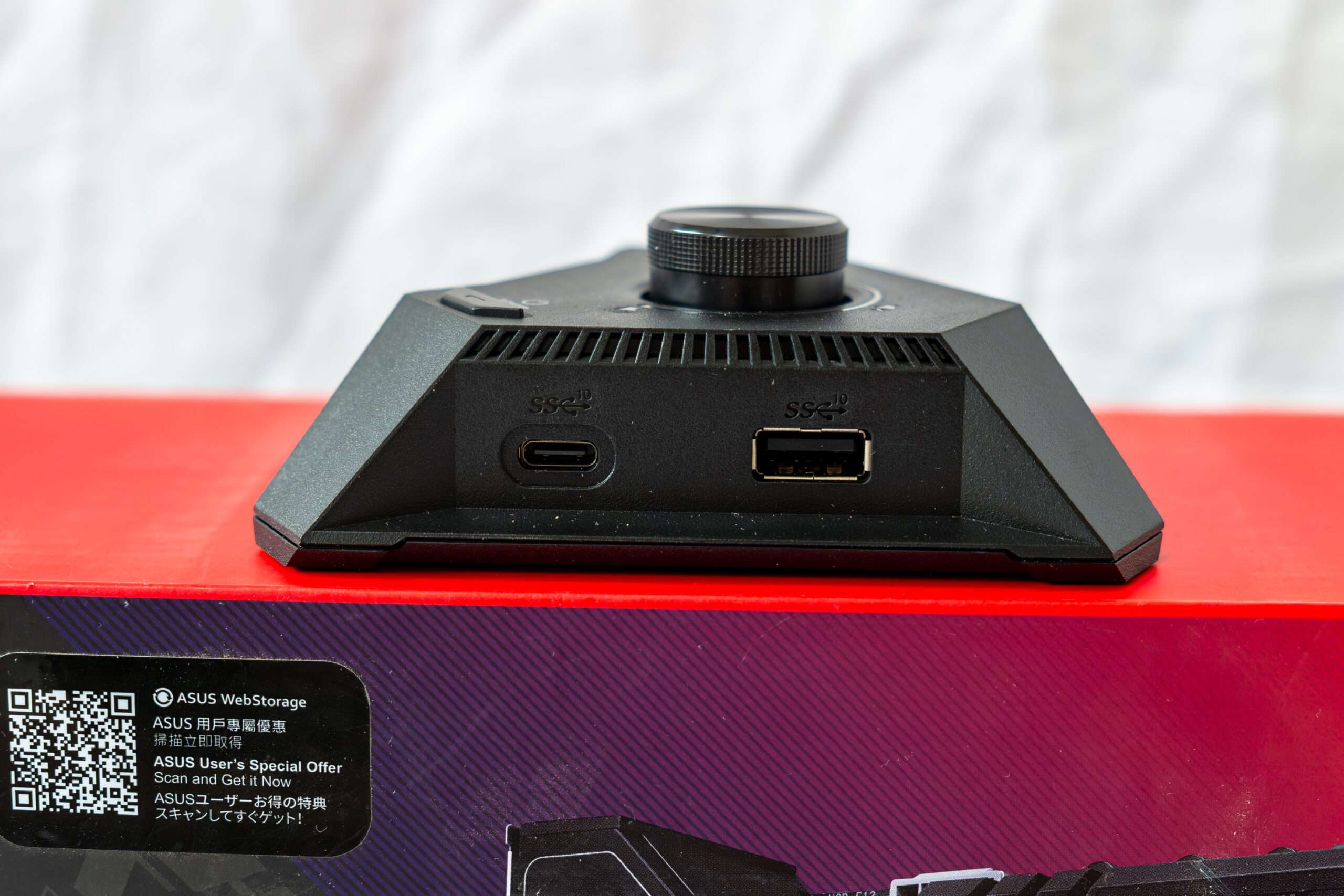


REALTEK ALC4050 CODEC & ESS® SABRE9260Q DAC
Typically, audio components are built into the motherboard’s PCB. The ROG Strix Hive flips the script and offloads all of the audio processing to an external module. Inside, an ALC4050 codec is paired with an ESS® SABRE9260Q DAC, producing clean high-res audio with 118 dB SNR output and 94 dB SNR input and 32-bit / 384 kHz playback. I/O includes S/PDIF out that also supports 3.5mm mic input, and an additional 3.5mm combo jack that can host mics or headphones.
HYPER-GROUNDING TECHNOLOGY
The Hive’s audio PCB features ROG Hyper-Grounding technology, which divides up analog and digital current return paths across separate layers to reduce noise, lower crosstalk, and deliver purer sound.

How We Test ASUS ROG STRIX Z890-I Gaming?
Intel Z890-I Gaming is a gaming motherboard from ASUS. As such, our workstation, based on an Z890-I Gaming motherboard and Intel Core i9 285K 24 cores 24 threads processor. The ram we will be using KLEVV DDR5 7200Mhz memory kit. ASUS ROG STRIX RTX4080 and ADATA PCIe 4.0 1TB SSD is used as well to run with benchmark. On the Comparison, we will be using ASUS ROG Z790 APEX with Intel Core i9 13900k @ 6Ghz and ASUS ROG Z790 Formula with Intel Core i9 14900K to run side by side to see perform better.
| System 1 | System2 | System 3 | |
| Motherboard | ROG Z790 APEX ENCORE | ROG Z890-I Gaming | ROG Z70 Formula |
| Processor | Intel Core i9 13900K Delid Copper ISH @6Ghz offset -0.03 | Intel Core Ultra9 285K – Intel Default | Intel Core i9 14900K – Intel Default |
| Ram | ADATA DDR5 32GB 6000Mhz CL30 | KLEVV DDR5 32GB 7200Mhz CL34 | ADATA DDR5 32GB 6000Mhz CL30 |
| SSD | Samsung 980Pro 2TB NVMe PCIe Gen4 | Lexar NM790 1TB NVMe PCIe Gen4 | Lexar NM790 1TB NVMe PCIe Gen4 |
| Graphics | ROG STRIX RTX4080 OC | ROG STRIX RTX4080 OC | TUF RX7900XTX |
| Cooler | ARTIC Cooling III AIO 360mm With Liquid Metal | EK-D AIO 360 III 360mm With Liquid Metal | EK-D AIO 360 III 360mm With Liquid Metal |
| BIOS | 1801 | 1401 | 506 |
| OS | Windows 11 64bits 24H23 Build 26100.3037 | Windows 11 64bits 24H23 Build 26100.3037 | Windows 11 64bits 24H23 Build 26100.3037 |
System Information

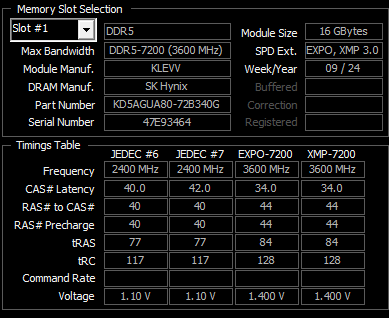
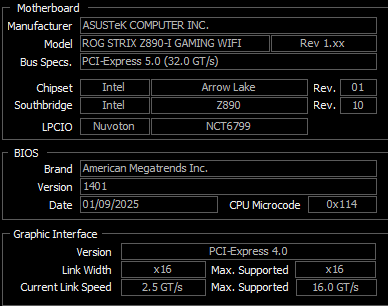
Cinebench R24
Improvements to Cinebench Release 24 reflect the overall advancements to CPU and rendering technology in recent years, providing a more accurate measurement of Cinema 4D‘s ability to take advantage of multiple CPU cores and modern processor features available to the average user
| GPU | CPU Multi Core | Single Core | |
| Core i9 13900K Delid @ 6Ghz | 27225 | 2211 | 133 |
| Core i9 14900K | 15344 | 2181 | 134 |
| Ultra 9 285K | 27049 | 2460 | 147 |
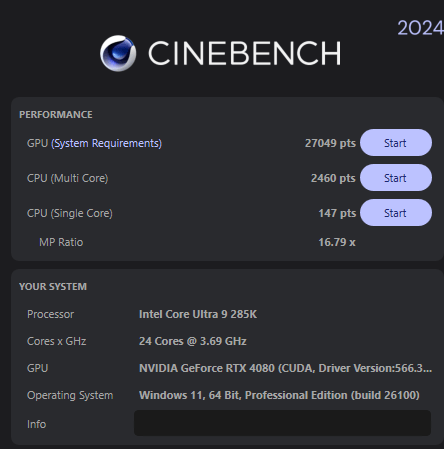
PCMark 10
PCMark 10 features a comprehensive set of tests that cover the wide variety of tasks performed in the modern workplace. With a range of performance tests, custom run options, Battery Life Profile, and new Storage benchmarks, PCMark 10 is the complete PC benchmark for the modern office.
| Essentials | Productivity | Digital Content Creation | Score | |
| Core i9 13900K Delid @ 6Ghz | 11569 | 11819 | 15693 | 9247 |
| Core i9 14900K | 13070 | 12421 | 20209 | 10663 |
| Ultra 9 285K | 11444 | 11452 | 19055 | 9727 |
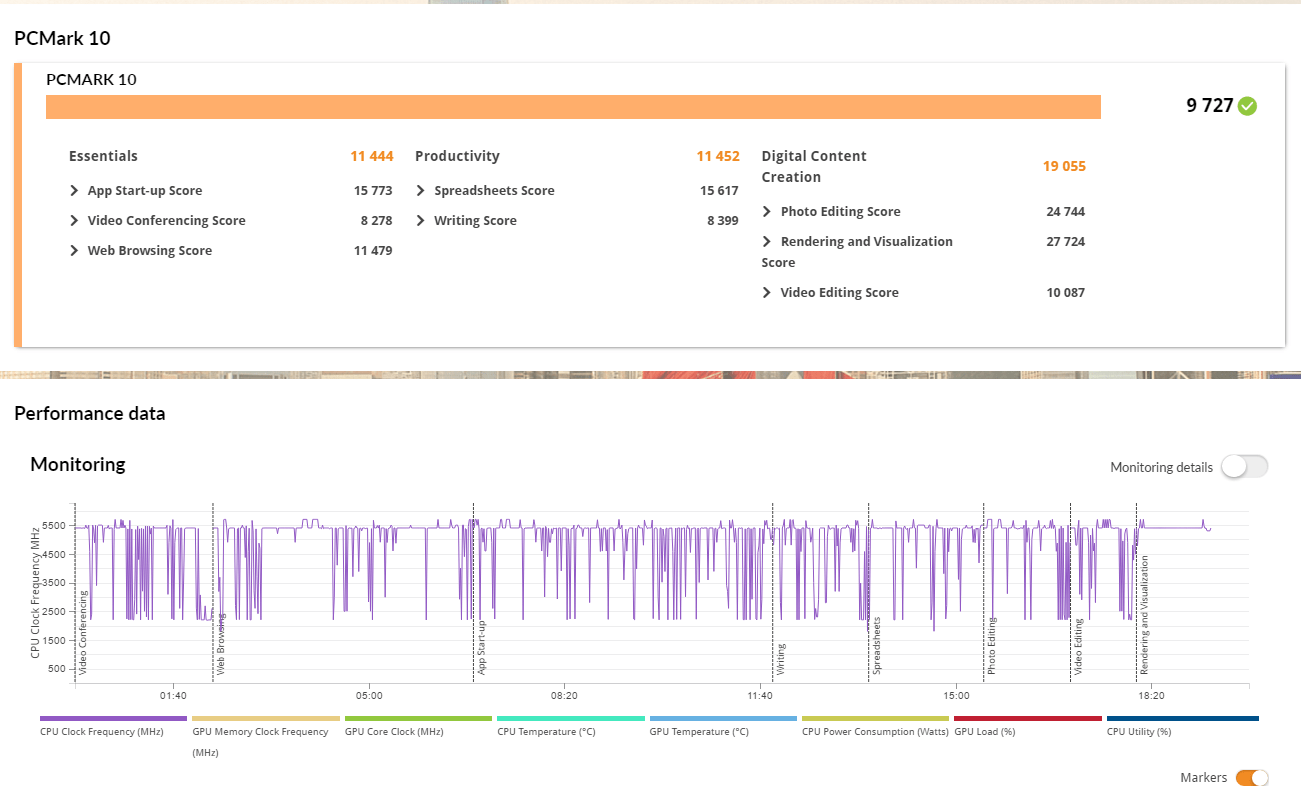
3Dmark Advanced Edition
3DMark includes everything you need to benchmark your PC and mobile devices in one app. Whether you’re gaming on a smartphone, tablet, notebook, or a desktop gaming PC, 3DMark includes a benchmark designed specifically for your hardware.
| Max Threads | 16 Threads | 8 Threads | 4 Threads | 2 Threads | 1 Threads | |
| Core i9 13900K Delid @ 6Ghz | 16334 | 11734 | 8425 | 4540 | 2348 | 1212 |
| Core i9 14900K | 16927 | 11974 | 8938 | 4822 | 2428 | 1255 |
| Ultra 9 285K | 18658 | 14974 | 9600 | 5260 | 2721 | 1393 |

| Core i9 13900K Delid @ 6Ghz | Core i9 14900K | Ultra 9 285K | |
| Wild Life Extremme | 60333 | 56840 | 61277 |
| Fire Strike Ultra | 17619 | 19982 | 17648 |
| Time Spy Extreme | 13739 | 14627 | 13865 |
| Solar Bay | 135018 | 110987 | 140522 |
| Port Royal | 18172 | 16582 | 17948 |
| Steel Nomad | 6675 | NIL | 6707 |
| Speed Way | 7408 | 6220 | 7294 |
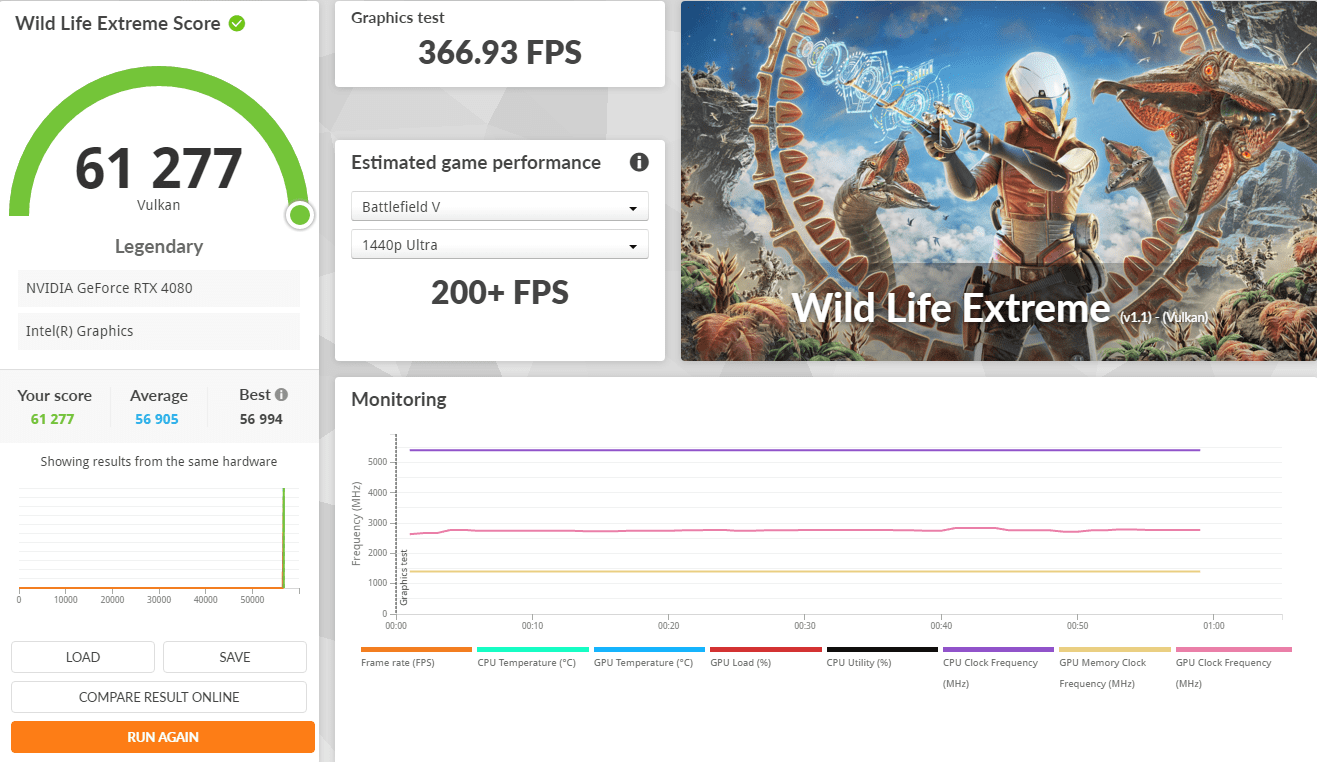
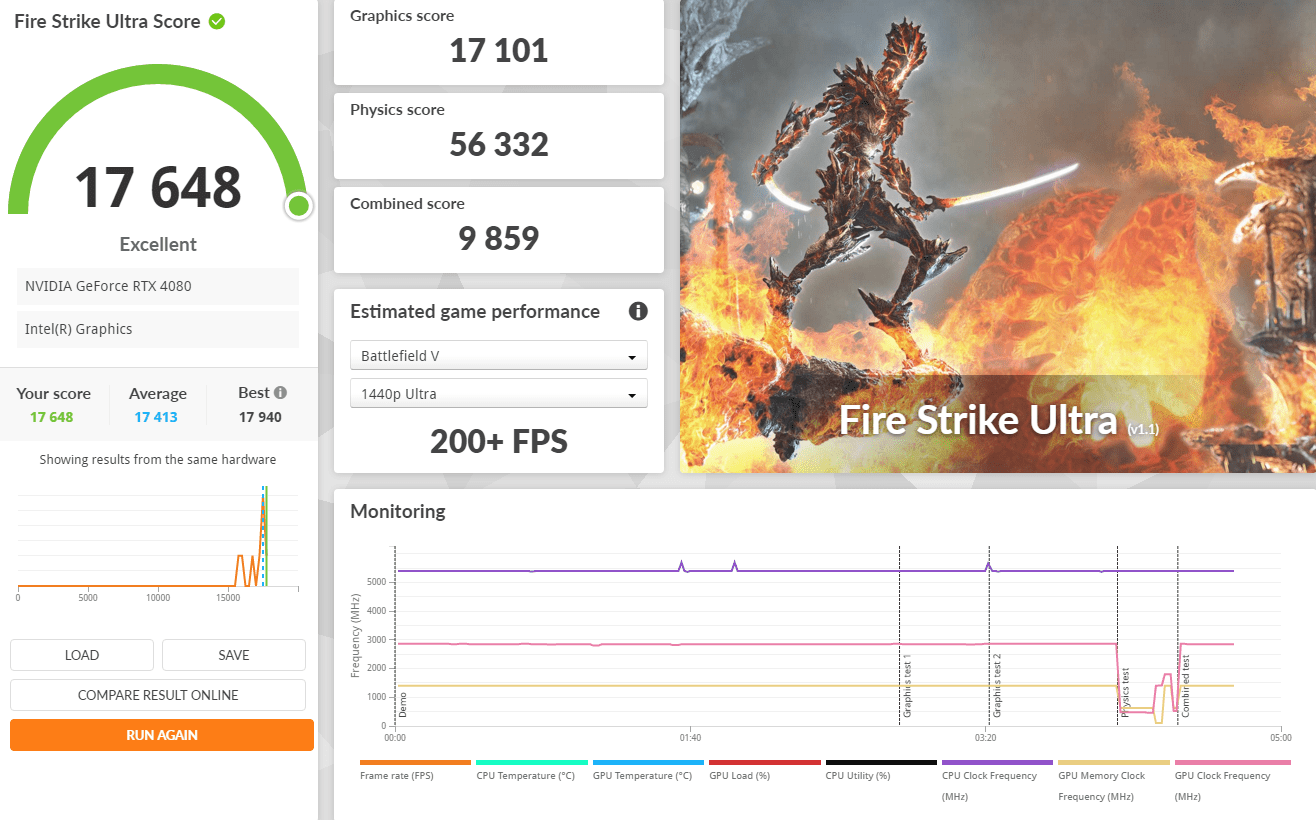
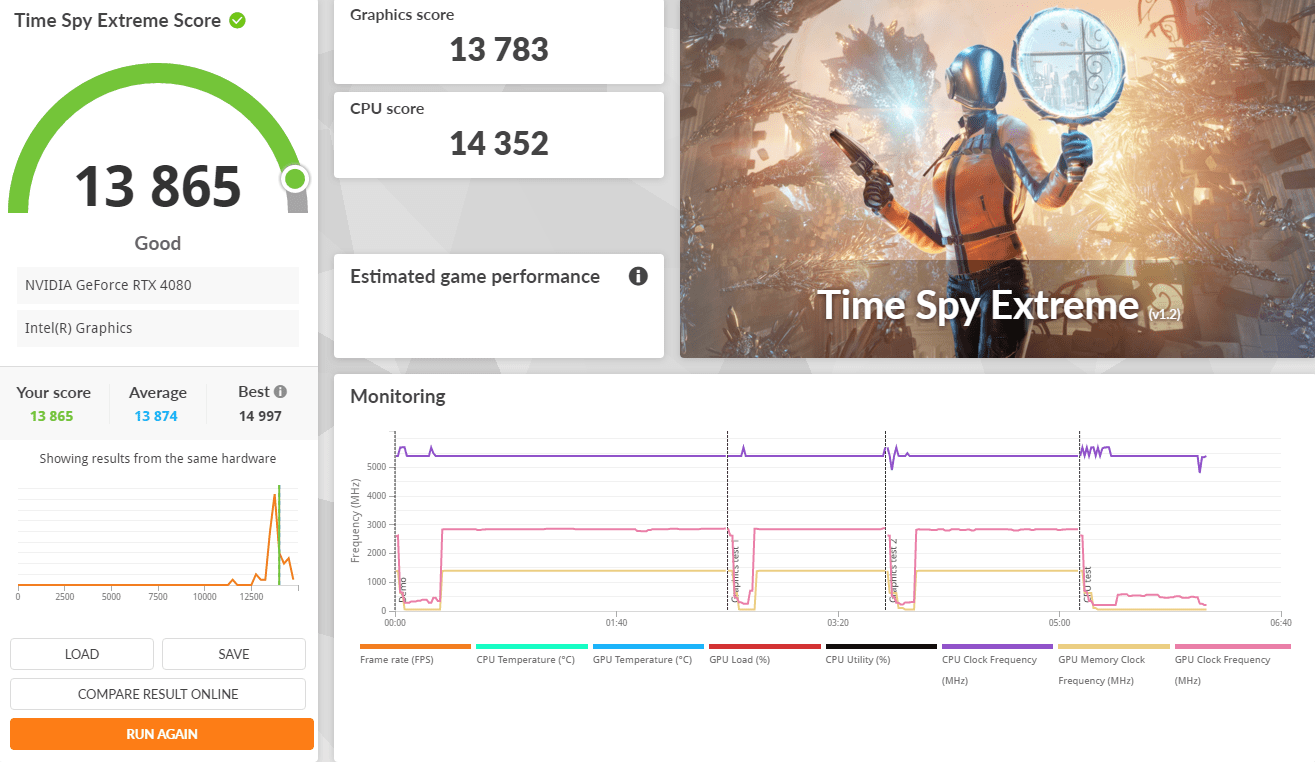
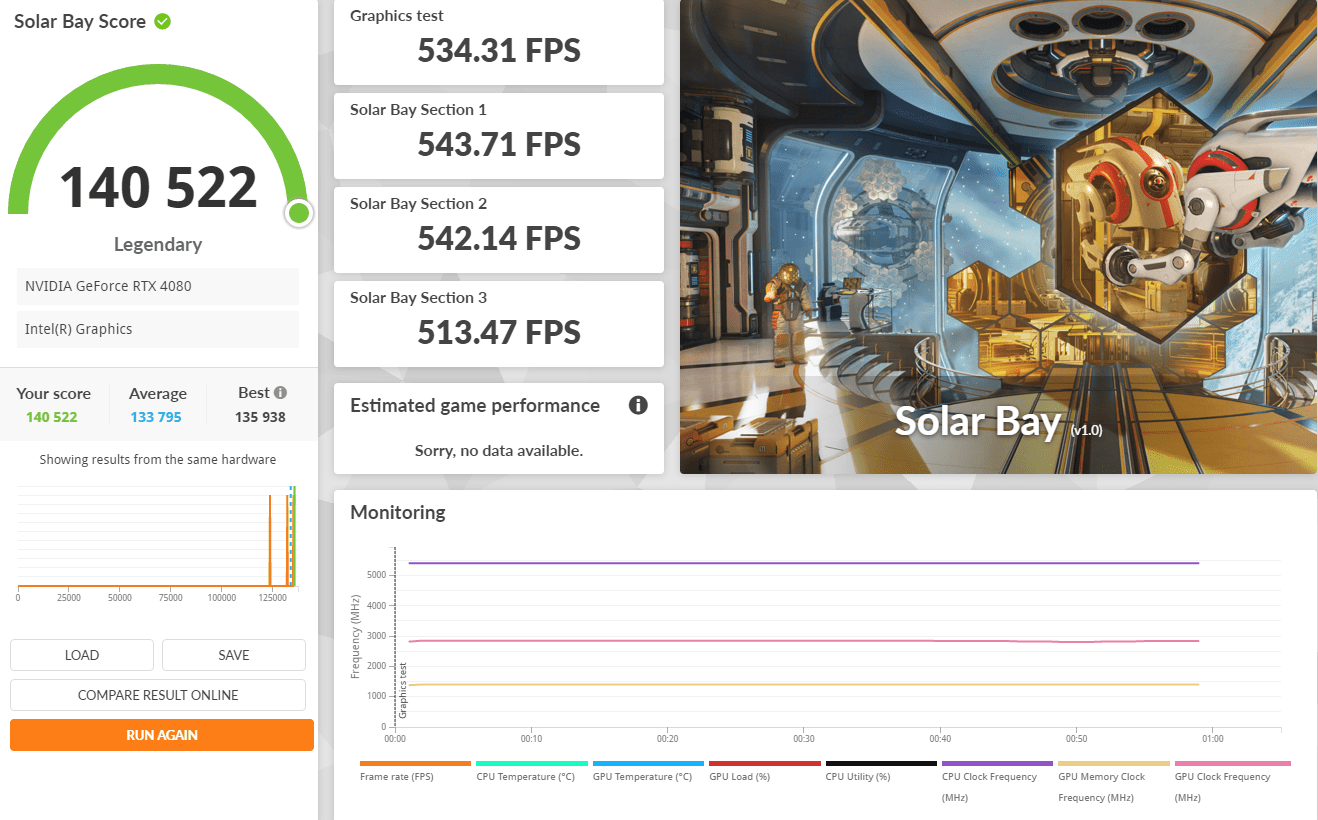
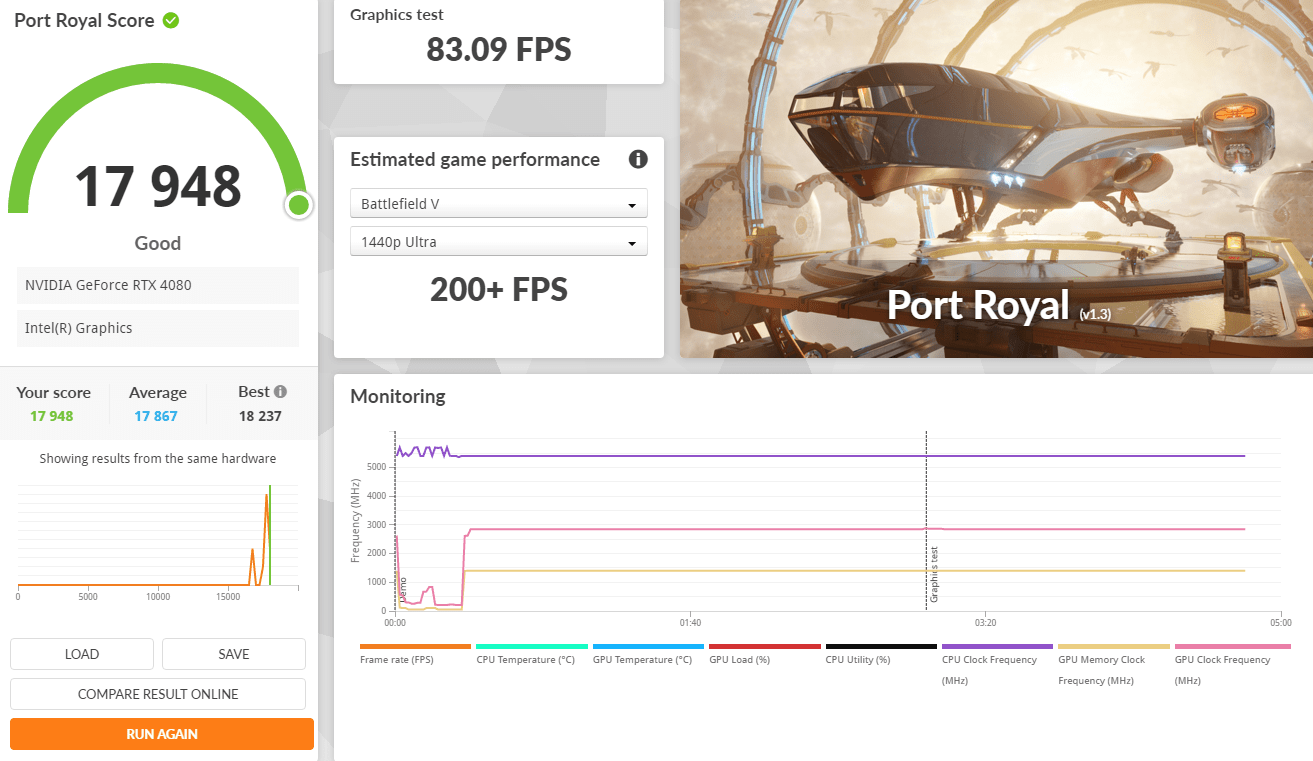
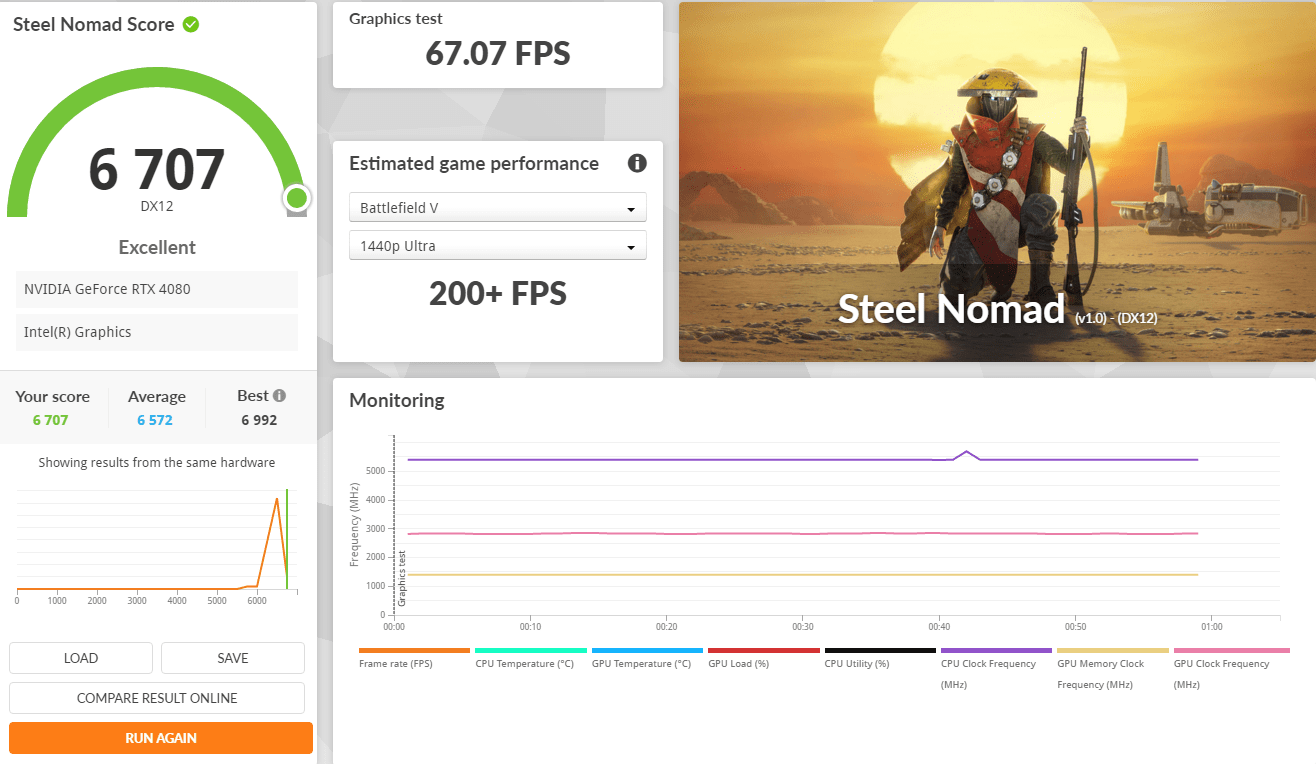
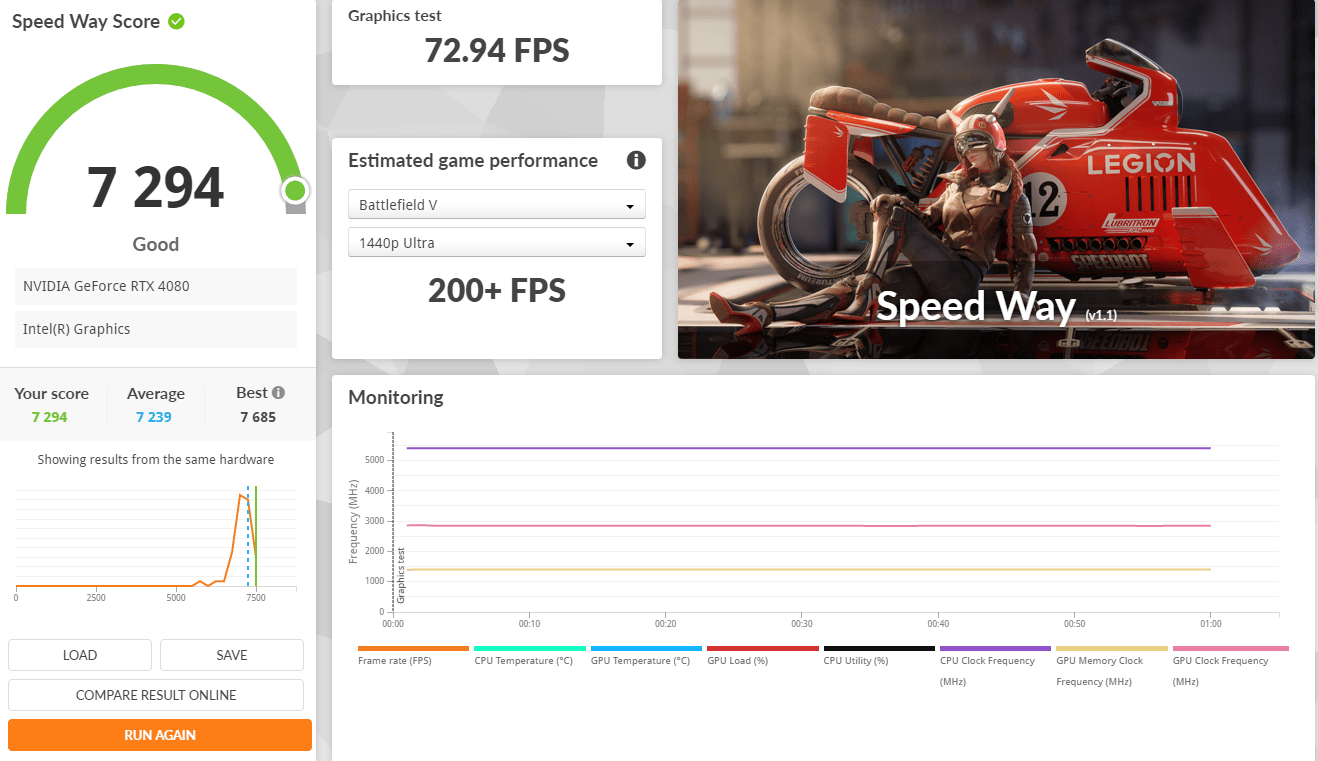
| Core i9 13900K Delid @ 6Ghz | Ultra 9 285K | |
| Average FPS | 81 | 79 |
| Maximum FPS | 95 | 93 |
| Minimum FPS | 68 | 65 |
| Low 5th FPS | 71 | 69 |
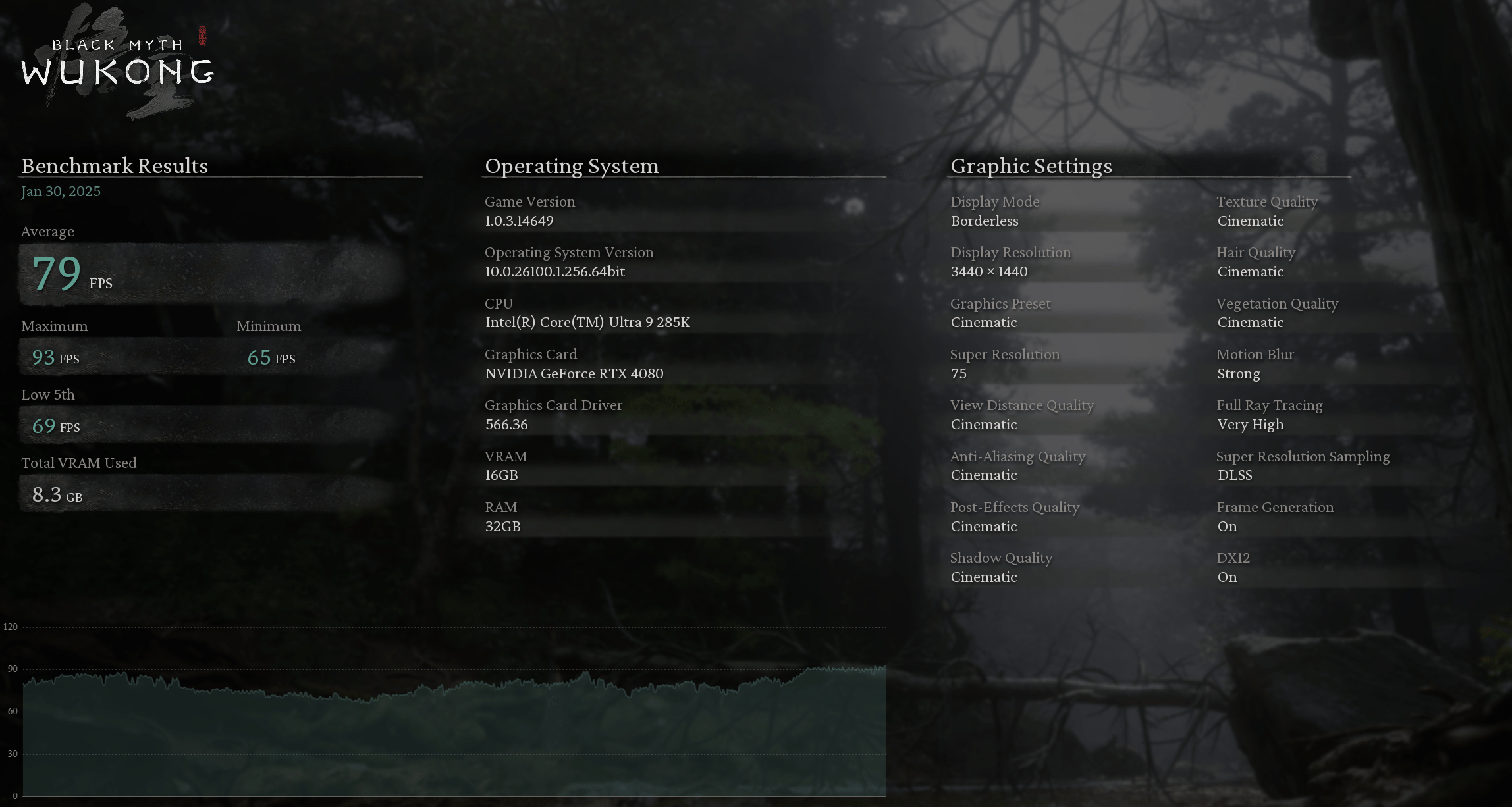
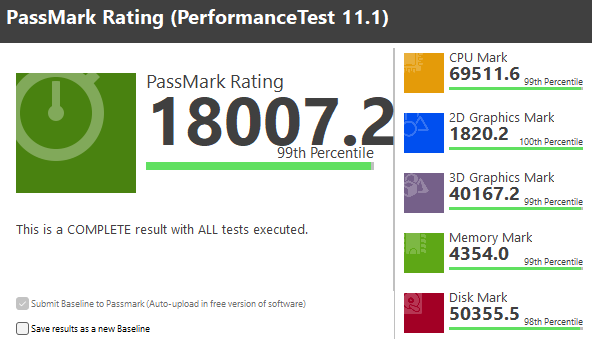
Should you buy ASUS ROG Z890-I Gaming Motherboard?
The ASUS ROG Strix Z890-I Gaming WiFi motherboard stands out as a high-end Mini-ITX solution, offering cutting-edge features and a well-thought-out design. With support for PCIe 5.0, high-speed M.2 storage, and an advanced power delivery system managed by the Digi+ ASP2432 PWM controller, it is built to handle demanding workloads. The inclusion of dual 30mm cooling fans ensures efficient heat dissipation for the VRM and M.2 SSDs, preventing thermal throttling.
Additionally, the motherboard benefits from robust connectivity, including high-speed USB Type-C with Power Delivery support via the Realtek RTS5439 chip, and intelligent power phase management powered by ENE Technology’s TPU controller. The integration of AI-based features, controlled by the ENE KB1724QA chip, further enhances performance optimization and overclocking capabilities.
While its compact form factor requires careful PCIe lane allocation, managed by Lerain multiplexers, the board still delivers impressive performance and expandability. Overall, the ROG Strix Z890-I Gaming WiFi is a top-tier Mini-ITX choice, ideal for gamers and enthusiasts seeking powerful performance in a small footprint.
